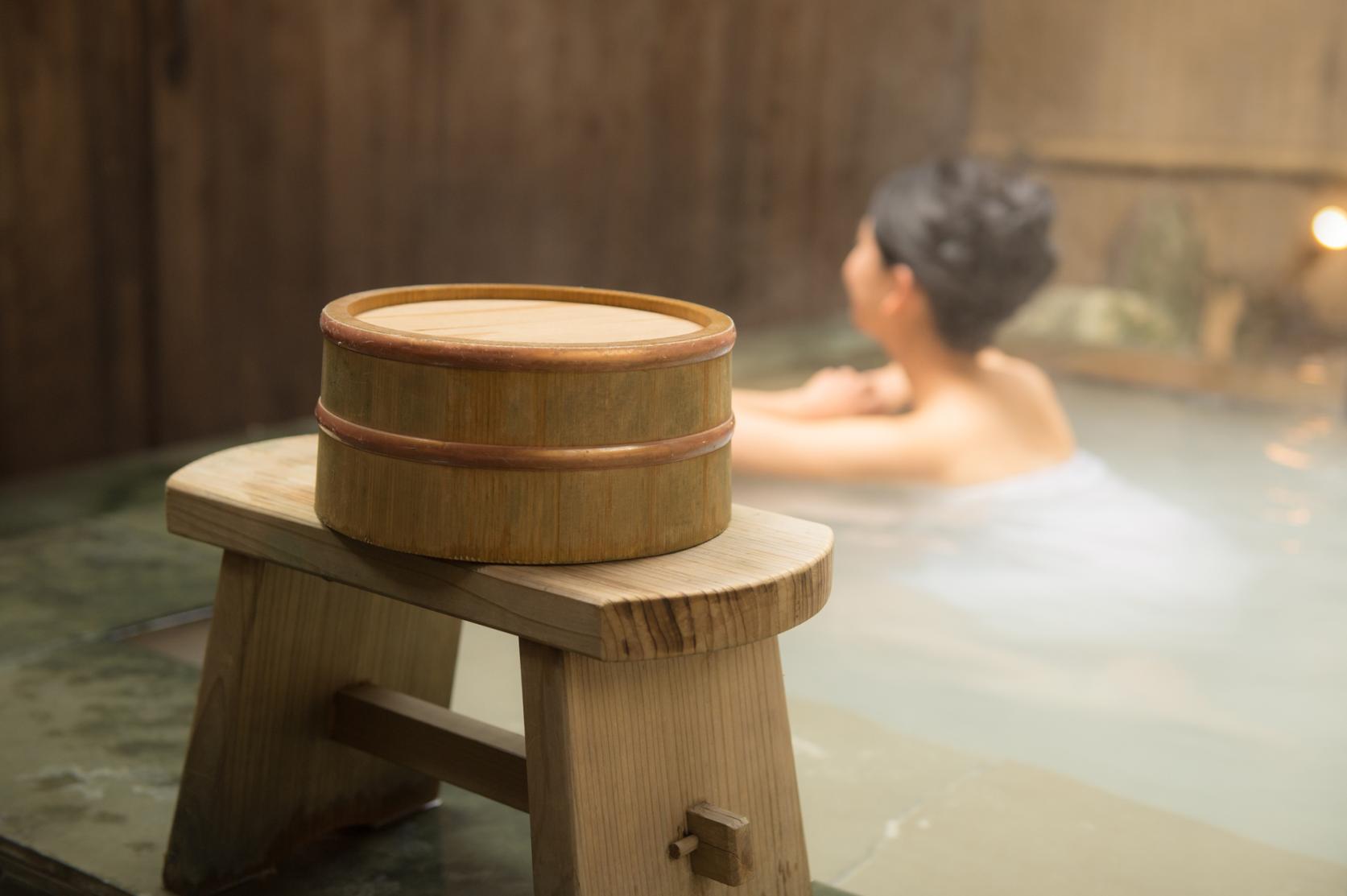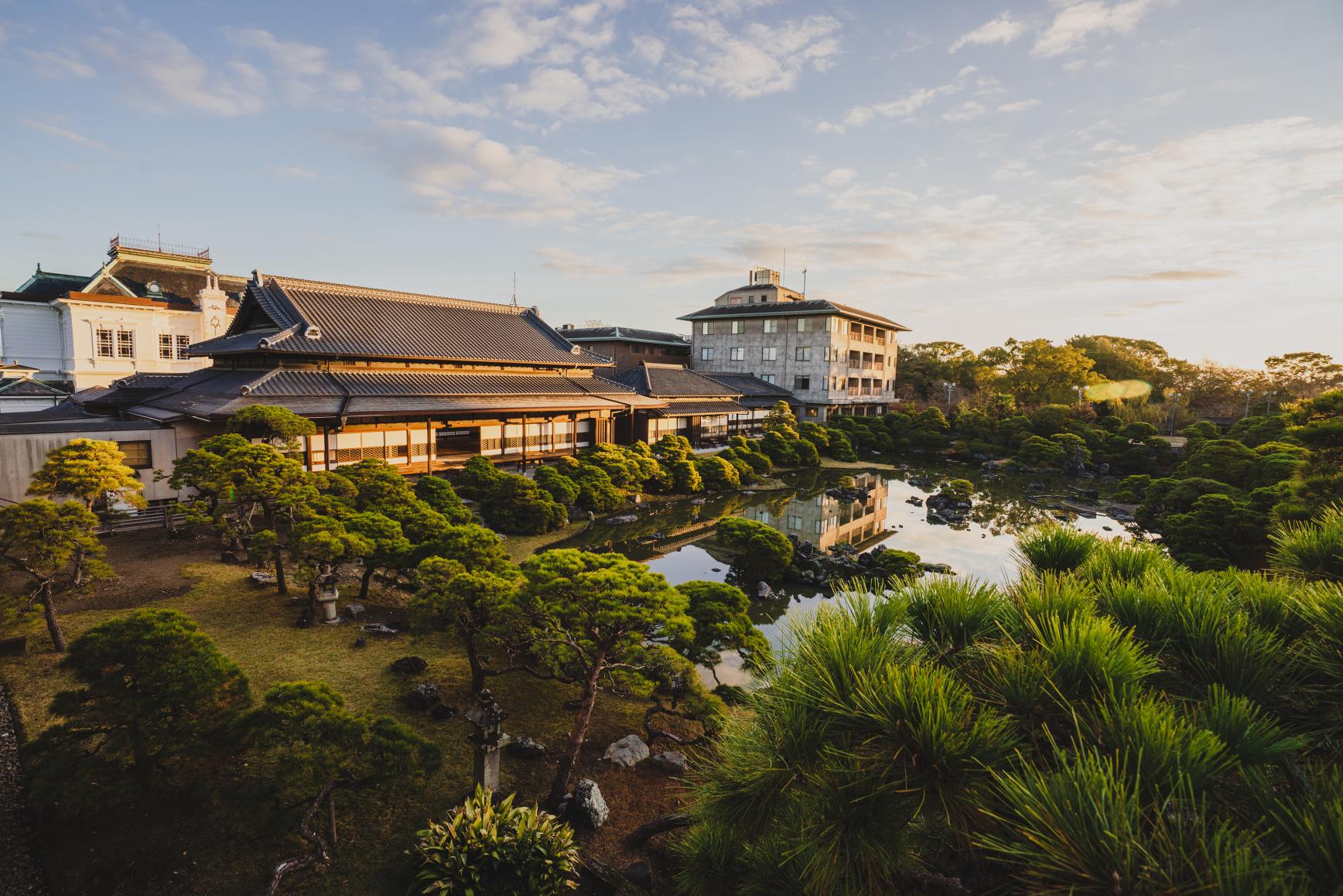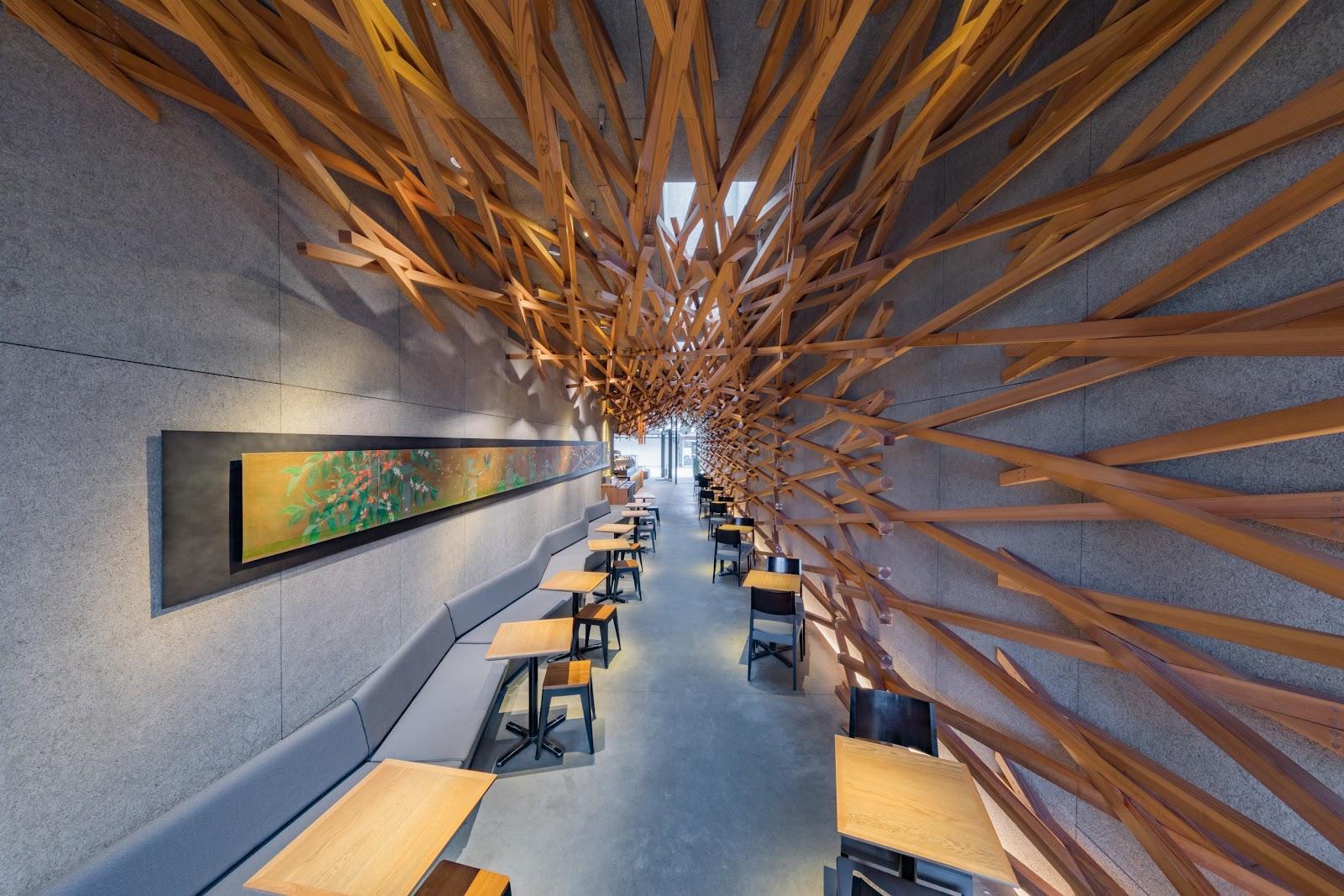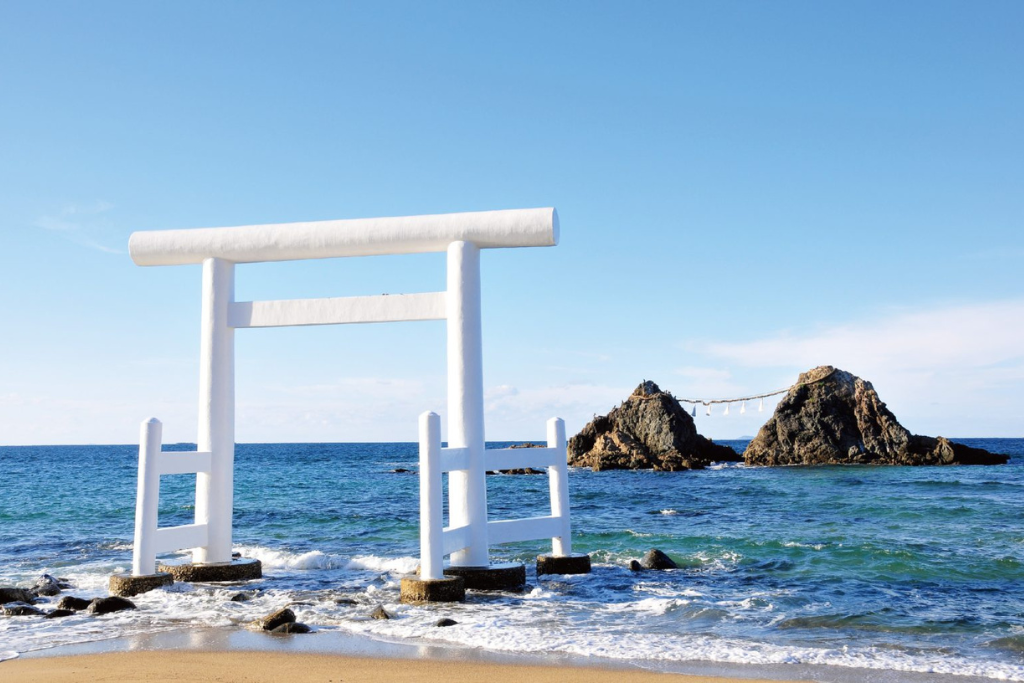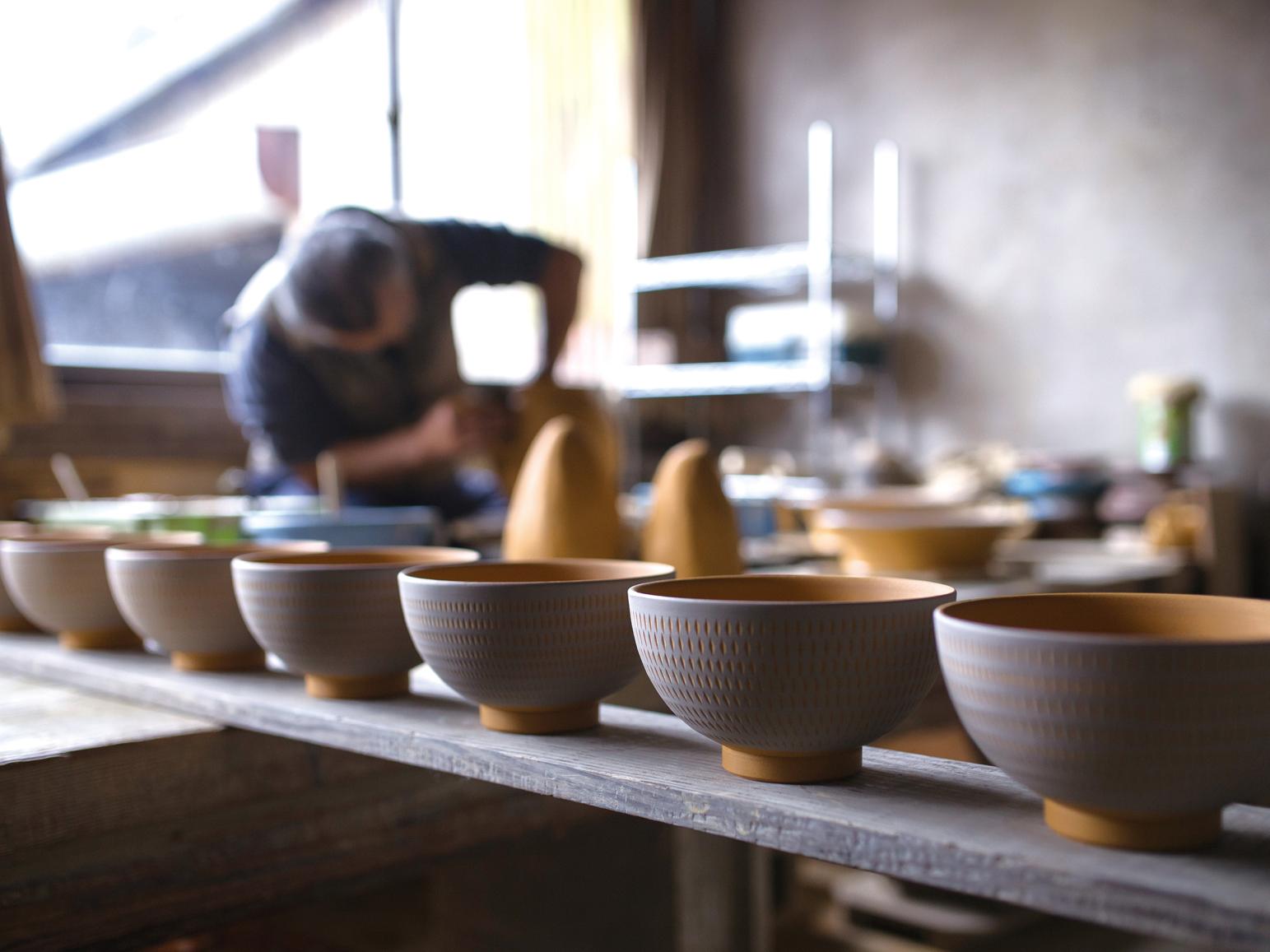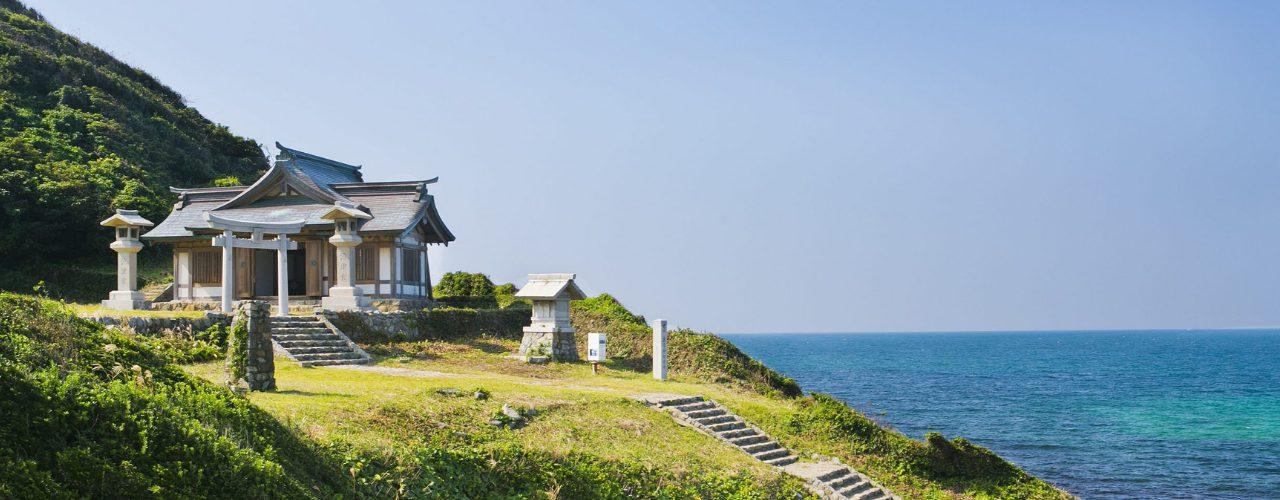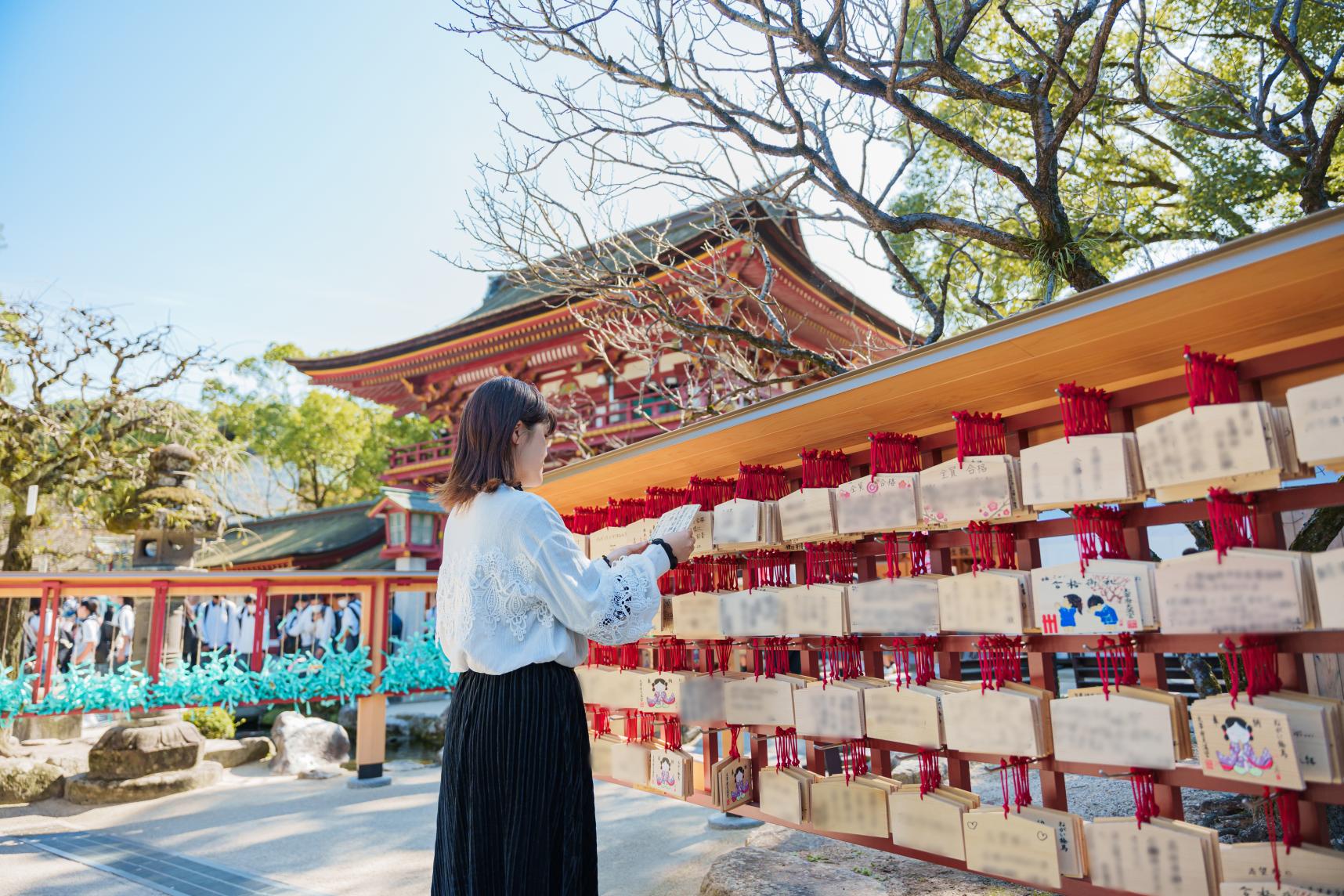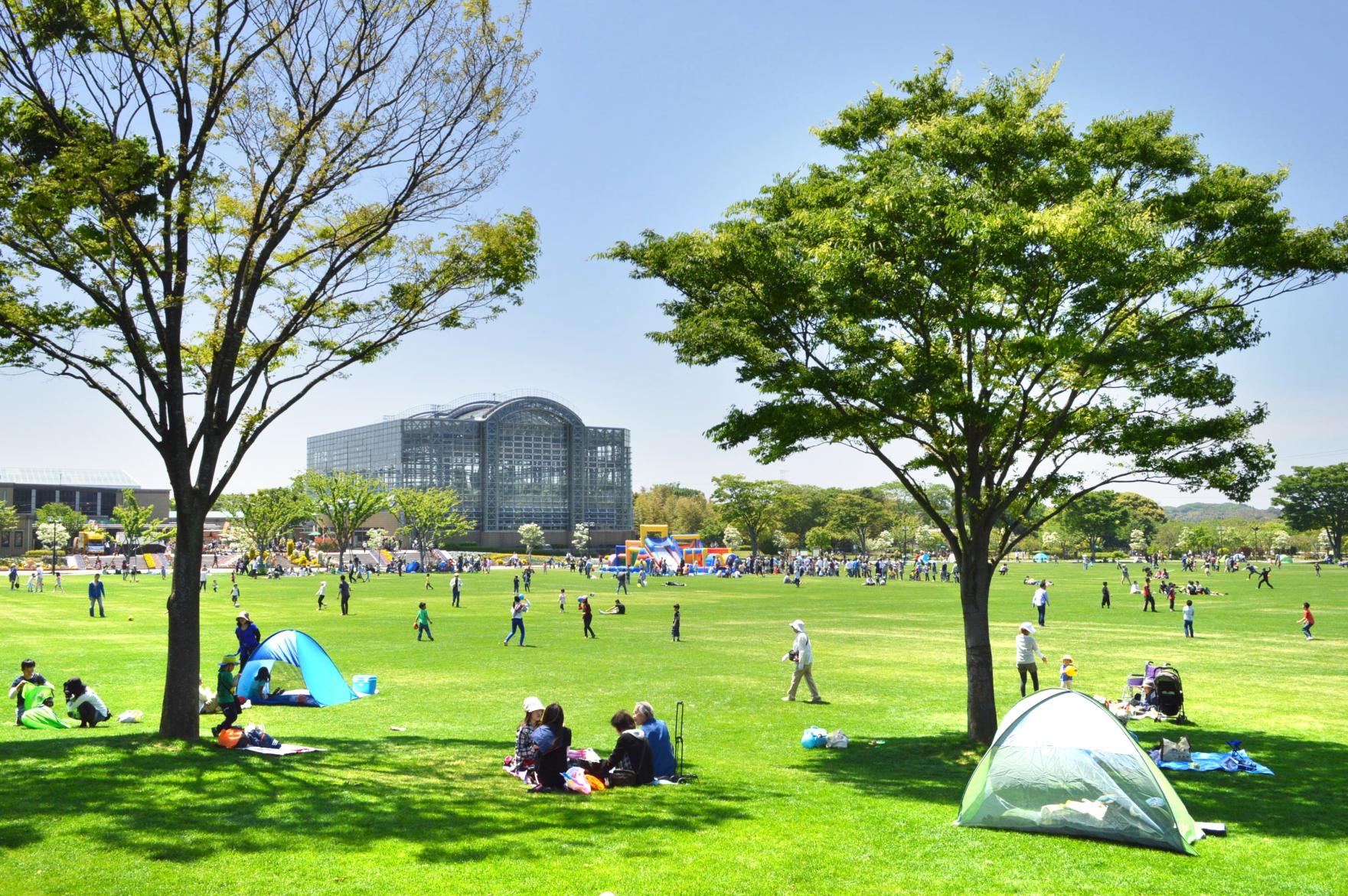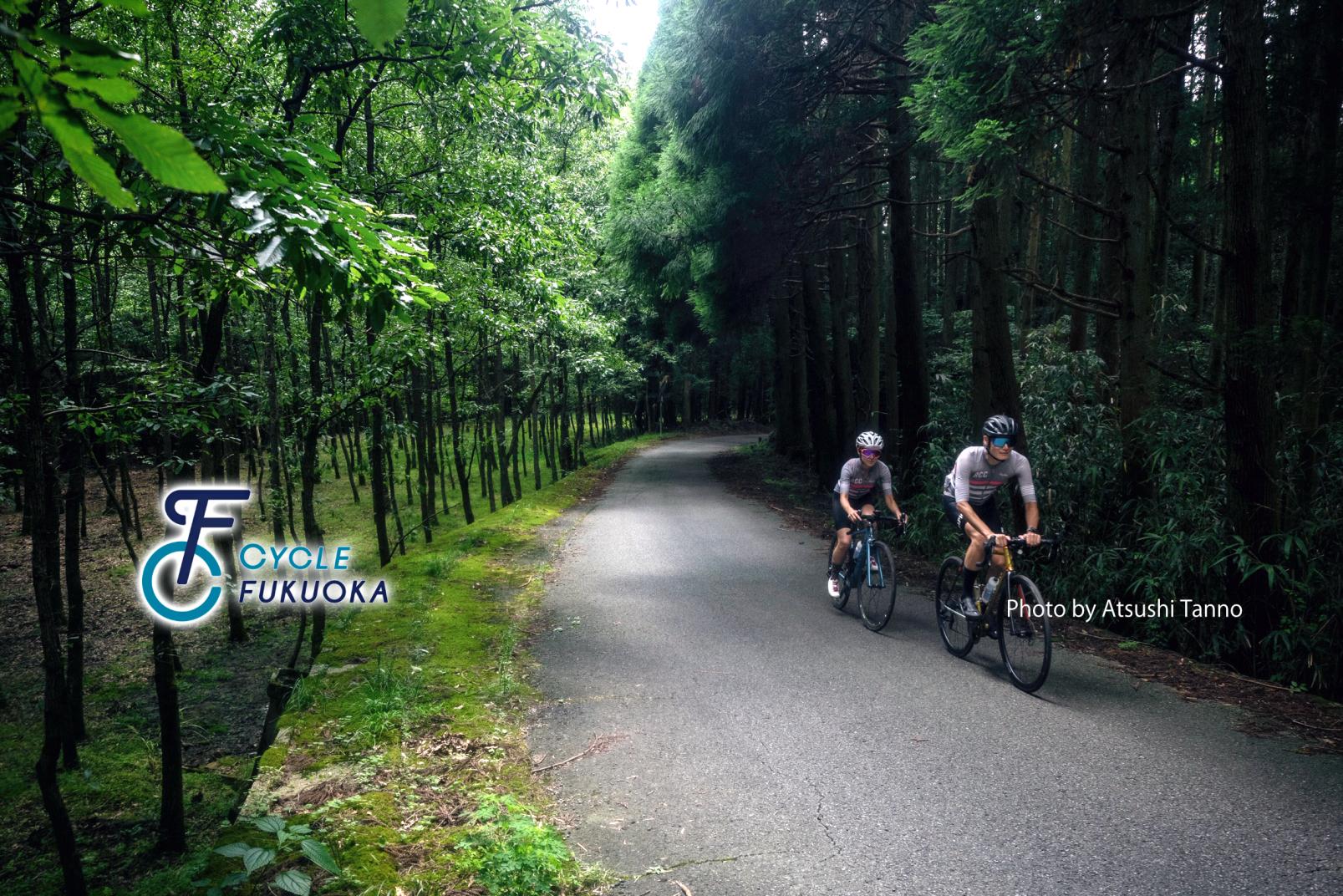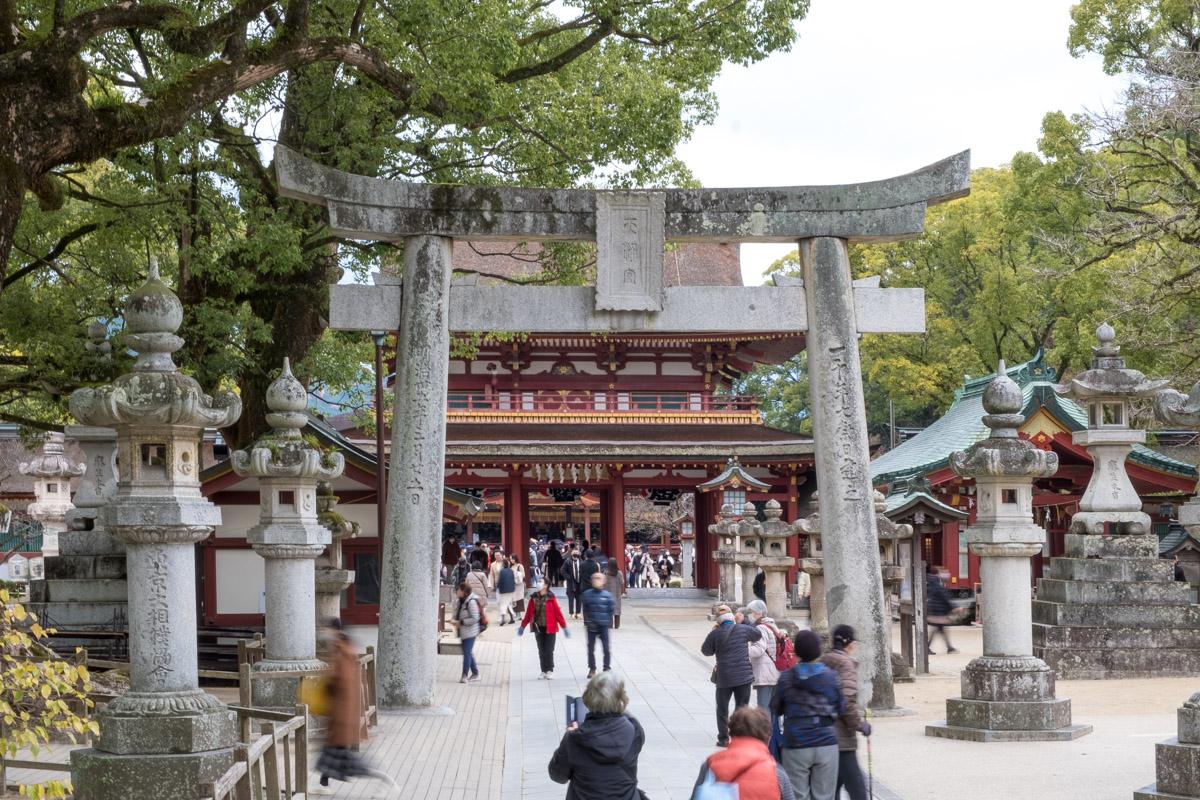
Dazaifu Tenmangu Shrine: A Cultural, Religious, and International Art Hub of Fukuoka
Students studying for exams, plum blossom admirers, and art lovers all converge at Fukuoka’s Dazaifu Tenmangu Shrine at some point or another. Enshrined here is Sugawara Michizane, known as one of the greatest scholars of Japan from the Heian period (794 –1185). During exams season, busy students visit, hoping to absorb some of the wisdom of this enshrined Tenjin deity of learning, culture, and the arts. From late January to early March, 6,000 ume plum blossoms, Sugawara’s favorite flower, turn Dazaifu Tenmangu Shrine into one the premier plum flower viewing locations in all of Japan. And throughout the year, Dazaifu Tenmangu Shrine is a site where art lovers converge to Keidai Art Museum’s permanent open-air art collection of ten conceptual art pieces installed throughout the shrine complex.
While Dazaifu Tenmangu Shrine might seem like an unlikely spot to hold a permanent collection of contemporary artworks, understanding more of the enshrined deity will quickly reveal why the shrine has become an up-and-coming art destination since the early 2000s. Learn more about the shrine’s history and what to see and do around the area, including a shrine visit, shopping, and cuisine
Sugawara Michizane: The Deity of Learning, Culture, and the Arts
Every year, over 10 million visitors make their way to the city of Dazaifu, south of Fukuoka, to pray at Dazaifu Tenmangu Shrine, one of the most important shrines dedicated to Tenjin, the patron deity of academics, scholarship, and learning. Tenjin is embodied by the enshrined Sugawara Michizane (845 – 903), known as one of the greatest scholars of Japan from the Heian period, whose contributions greatly influenced Japanese culture and society.
Sugawara had achieved the highest level of scholarly recognition at the time and became a trusted advisor to the imperial family—so trusted, in fact, that a rival political family falsely accused him of conspiring against the imperial family in a bid to discredit him and strip him of his influence. Unfortunately for Sugawara, the plot was successful, and he was banished to Dazaifu to live out the rest of his years in disgrace. At the age of 59, Sugawara passed away alone and impoverished, never regaining his prior place of influence. After his death, the plot was later revealed, and his reputation was exonerated. His remains reside under Dazaifu Tenmangu Shrine, and because of his profound impact on Japanese culture, the shrine has become a center for culture and art ever since.
A fantastic example of how this shrine embodies creativity and beauty is in the temporary honden that has been constructed in front of the original building while it undergoes a 3-year restoration project that started in 2023 in preparation for an important event: a ceremony commemorating the 1,125 year anniversary of Sugawara’s death. The next ceremony, held every 25 years, will be held in 2027.
In the meantime, however, shrine-goers will be treated to a stunning variation on the original honden. With an elegant black hall crowned with a lush garden, this temporary hall is like nothing you have ever seen. The design is based on a story of an ume tree that flew from Kyoto to Dazaifu to be with Sugawara, tying in his love of the flower into the design. This extraordinary honden, while temporary, is steadfast in its celebration of nature and creativity in keeping with years of tradition at Dazaifu Tenmangu Shrine.
Keidai Art Museum: Dazaifu Tenmangu Shrine’s Open-Air Art Installations
Today, Dazaifu Tenmangu Shrine continues to honor its deity’s appreciation for the arts. In 2006, the shrine launched the Dazaifu Tenmangu Art Program as a continued effort to carry on its artistic tradition and to attract a new contemporary art crowd across Japan’s borders in the international art world.
Currently, the open-air Keidai Art Museum on the shrine complex houses ten art installations by international and Japanese artists that are free to view and open to the public.
Ryan Gander: The Invisible Thinker
Ryan Gander is the first foreign artist invited to create in situ art installations based on their time at Dazaifu Tenmangu Shrine. Inspired by the lack of god-like imagery compared to images of Christ and Mary in Christianity, Gander created works based on the notion of invisibility — not all important things, like religious figures, need to exist for faith and belief to exist. In Really shiny stuff that doesn’t mean anything, a magnetic metal ball is brought together by its own invisible magnetic force. Much like the invisible force of magnetism, religious faith is an invisible binding force. Instead of drawing together metallic objects, people are gathered together and bound by a common ideology.
In Like the air that we breath, a carved pillar marks the spot where 75 precious items donated by kindergarteners from the Dazaifu Tenmangu Kindergarten are buried. The pictograms on the log only hint at what these precious items are, allowing us to freely imagine what these treasures could be until the time capsule is reopened.
In Everything is learned, VI, a stone stool rests within a garden, inspired by the French bronze sculpture by Auguste Rodin, The Thinker. Indentations in the stone suggest that someone took their time pondering while seated, inviting the viewer to consider what invisible thoughts they must have pondered.
Simon Fujiwara: The Problem of History
Simon Fujiwara, a Berlin artist, is an artist creating works with the intention that they might last longer than a thousand years, just as long as the shrine itself. Made of materials such as congregate rock, they have the durability to stand the test of time, allowing them to eventually become as important as already existing sacred rocks within Japan.
During World War II, much of Japan’s precious bronze bells and other sculptures were melted down for the war effort. This weather-resistant, time-proven material selected to keep the works safe ultimately became their undoing, as sometimes even durable materials that can potentially last millennia are not safe from the evolving wants of society.
Take, for example, Simon’s work The Problem of History, where an unassuming white garden chair is placed seemingly randomly under a tree. The white chair, normally made from plastic, is cleverly disguised bronze. In creating this disguised bronze chair, he has created a permanent, long-lasting relic that might survive even a war. Because of these attributes, the chair stands as a quiet monument to the survivors of the Second World War.
These artworks, among others exhibited around the shrine complex, are what make Keidai Art Museum’s permanent collection exceptional. Pick up a Keidai Art Museum map pinpointing all of the shrine’s art installations, then wander through the grounds with your treasure map in hand. For an up-to-date list of works, news, and upcoming events, visit the official Keidai Art Museum website.
How to Explore Dazaifu Tenmangu Shrine
Dazaifu Tenmangu Shrine has a few entrances, though the most traditionally popular is from Tenmangu Sando Shopping Street. At the end of the street, a bronze ox, one of the shrine’s iconic statues, marks the beginning of your entry into the shrine complex. You may see a long line of visitors lining up to rub the ox for good luck before proceeding to the shrine.
Vibrant arched bridges line the shrine pathway over ponds swimming with koi fish, where you’ll walk under stone torii gates to the romon gate. Be sure to stop at the purification pool lined with ladles to rinse your hands and mouth, in order to purify your soul and mind and present the best version of yourself to the shrine.
Dazaifu Tenmangu Shrine and Sugawara Michizane welcome all to this shrine. Drop your coin into the shrine’s offering box, bow twice, then clap twice as you quietly offer your wishes to the deity. When you’re done, give a final bow.
While daytime hours can be crowded, if you come in the evening, you’ll be rewarded with a perfectly serene moment among few, if any, other visitors. It’s so quiet that you can hear Shinto priests pray at the front of the shrine.
Plum Blossoms and Other Seasons of Dazaifu Tenmangu Shrine
While the iconic sakura cherry blossom remains deeply rooted within the esthetics of Japanese culture, it was the less celebrated plum blossom that stole Sugawara’s heart. Fittingly within the complex of Dazaifu Tenmangu Shrine, the plum blossom takes center stage. From the end of January to March, the shrine’s plum trees jump-start the festive floral season as some 6,000 ume plum blossoms come into bloom.
Sakura fans need not feel left out, however, as the mountain paths around the shrine offer a lovely viewing of cherry blossoms from late March to mid-April. A short walk away, Nakashima Shrine’s quiet wooded areas spring to life with sakura blossoms, while the approach to Kamado Shrine is lined with cherry trees. Shortly after the sakura season is over, other floral blossoms, such as azaleas and wisteria, start blooming around the Dazaifu Tenmangu Shrine complex.
In early June, the shrine’s iris pond comes to life as up to 55 different iris varieties dapple the pond’s reflection with pink, white, and purple flowers. Finally, in Fukuoka’s warm and extended autumn season, you can see the shrine’s maple trees gradually changing color from mid-November to early December.
Tenmangu Sando Shopping Street
Starting near Dazaifu Station and leading up to the portal entrance of the shrine, Tenmangu Sando Shopping Street is a lively pedestrian area marked by large stone torii. The traditional pathway to the shrine offers plenty of leisure shopping and eye candy to titillate your senses or put you in the mood for a snack.
Don’t miss trying the umegaemochi, an irresistibly chewy, sweet red bean rice cake branded with an ume plum icon. These popular shops are hard to miss, so be sure to pick up a tasty snack for the road or a few boxes as souvenirs, and watch the round balls of mochi and red bean being pressed into ume-branded grills.
Among the umegaemochi shops, clothing stores, and souvenir boutiques is the stylish Starbucks designed by renowned Japanese architect Kengo Kuma, made using traditional woodworking joinery.
Artful French-Inspired Cuisine at Le Un Restaurant
Just a 3-minute walk from Dazaifu Tenmangu Shrine, you can continue your artistic journey at Hotel Cultia within a fully restored Edo period (1603–1867) house, where the chef of French-inspired restaurant Le Un creates artfully prepared meals.
This former artist residence has been transformed into a boutique hotel operated by VMG, a company that specializes in restoring historically significant buildings and repurposing them into stylish traditional accommodations. Le Un is the main place to dine, where both overnight and dinner guests can indulge in French-inspired dishes that showcase the best of Fukuoka’s gastronomical delights.
To prime your imagination, here are just a few mouthwatering examples of what this venue can assemble: Carrot mousse with pork steeped in red wine. Artichoke heart soup with bacon foam. Hakata-raised wagyu beef with plum sauce served alongside Kyushu lotus roots. Berry mousse with pistachio ice cream. And to top it off, a tiny donut over Fukuoka’s Yame green tea, chocolate drops, and coffee.
Drinks include sparkling wines, a Dazaifu plum cider, and a collection of regionally specific soft drinks, as well as ciders that are selected and curated by the group’s sommelier.
Le Un’s menu shifts with the seasons throughout the year, so you can always expect creative Kyushu cuisine exquisitely prepared with French cooking techniques at Hotel Cultia.
Kamado Shrine
Just a short 1-minute bus ride to the top of the sacred mountain of Mount Homan, you will find the peaceful Kamado Shrine. Unlike the lively Dazaifu Tenmangu Shrine, Kamado Shrine is a much quieter, fresh approach to traditional-meets-modern, where its main hall shrine, renovated in 2013, is juxtaposed with an ultra-stylish amulet shop.
For 1,350 years, the deified Tamayorihime — the mother of Japan’s first emperor — has been revered as a bringer of romance and good luck within family relations. Since then, many have come to pray before her, wishing for more prosperous relationships in all matters of the heart.
The Kamado Shrine amulet shop looks more like it came from the pages of an interior design magazine, conceived by the prominent interior designer Masamichi Katayama. Its circular layout infuses ultra-modern design that pristinely displays stylish amulets and figurines in its arched display case, along with a central podium of other shrine goods.
In spring, the mountainside becomes another cherry blossom viewing spot in Dazaifu, while autumn brings red and orange foliage to its 300 maple trees starting at the mountain base and stairway up to the shrine.
If you’re looking for a lively blend of history, art, and food, Dazaifu offers a near-perfect combination. This small city pays tribute to its long history, and visiting its many memorable destinations is a noteworthy cultural experience. From its large art-infused Dazaifu Tenmangu Shrine to sumptuous French-inspired cuisine in Edo-period architecture, Dazaifu is a place for reflection and sensations, open to new ideas of artistic expression while remaining firmly rooted in tradition.
How to Get to Dazaifu Tenmangu Shrine
Visitors to Dazaifu Tenmangu Shrine from Hakata Station can easily take a direct bus from the main station in under an hour, making this an excellent day trip from central Fukuoka. Take the local bus from Hakata Bus Terminal on the ground floor for a 40-minute ride to Dazaifu Station. From there, follow the pedestrian Tenmangu Sando Shopping Street framed by stone torii gates up to Dazaifu Tenmangu Shrine.


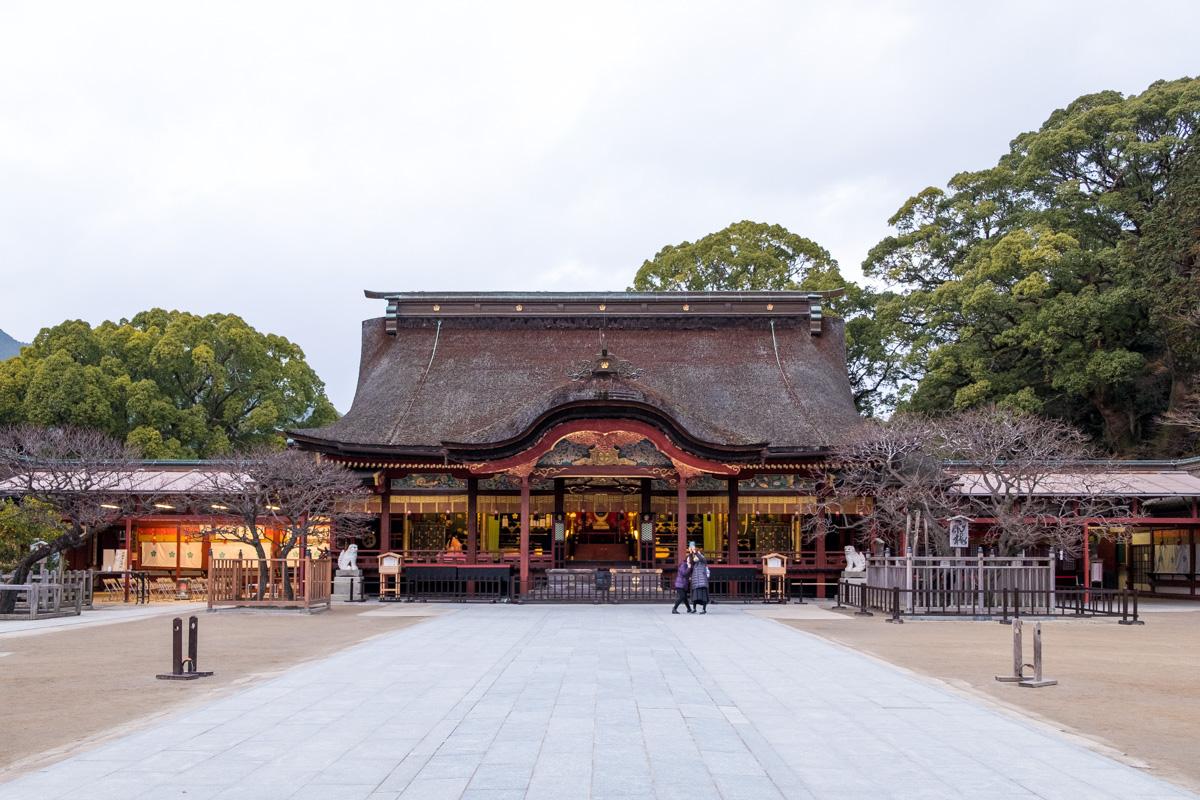
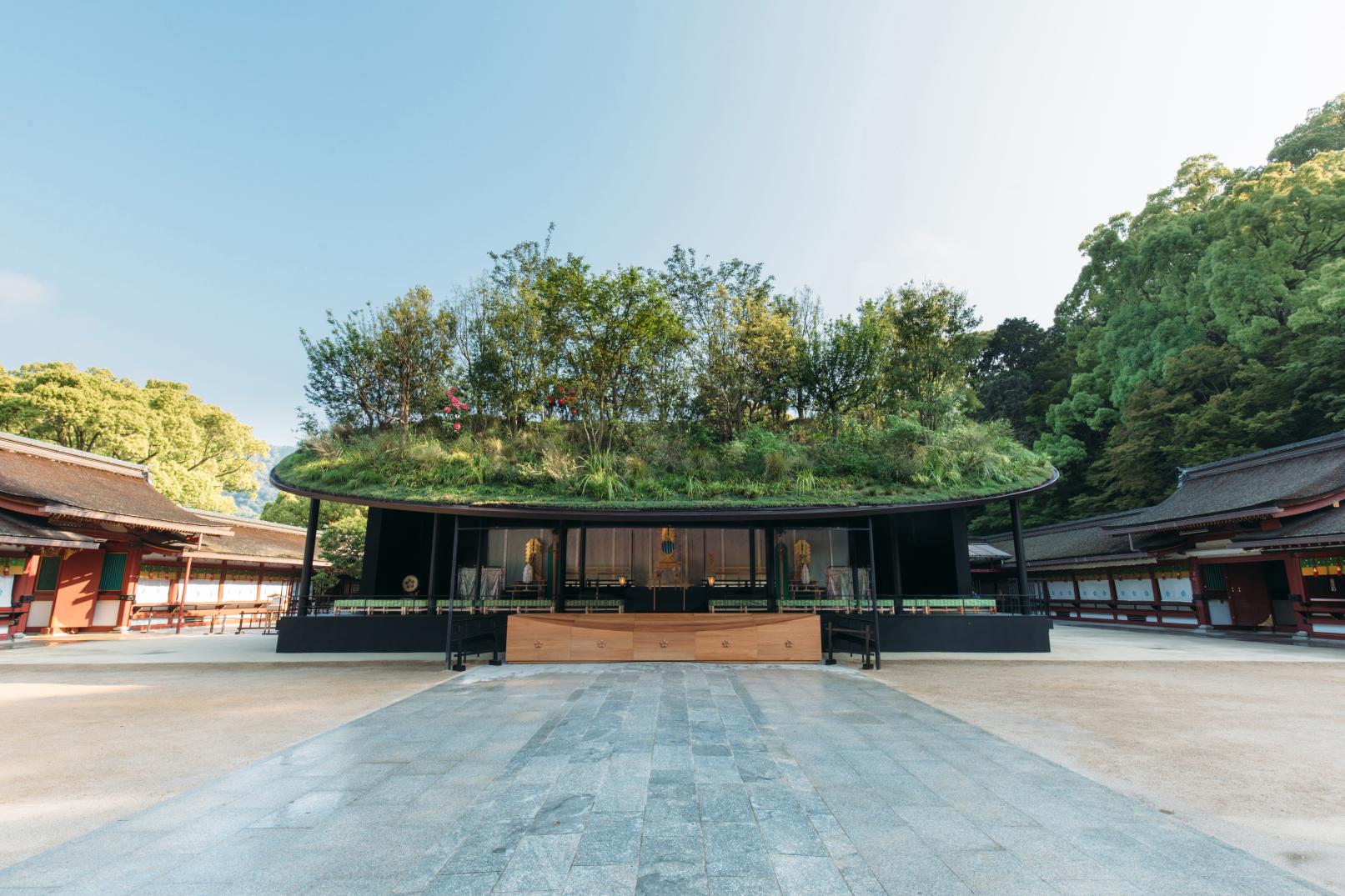
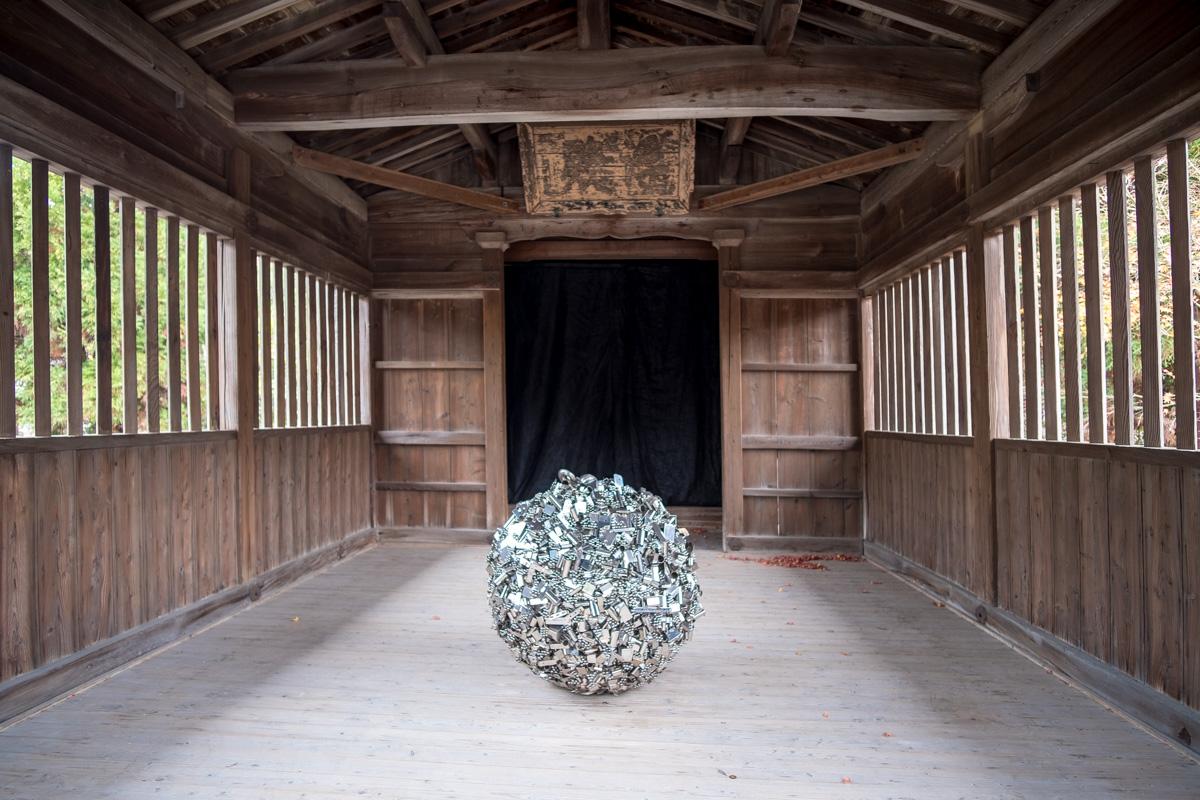
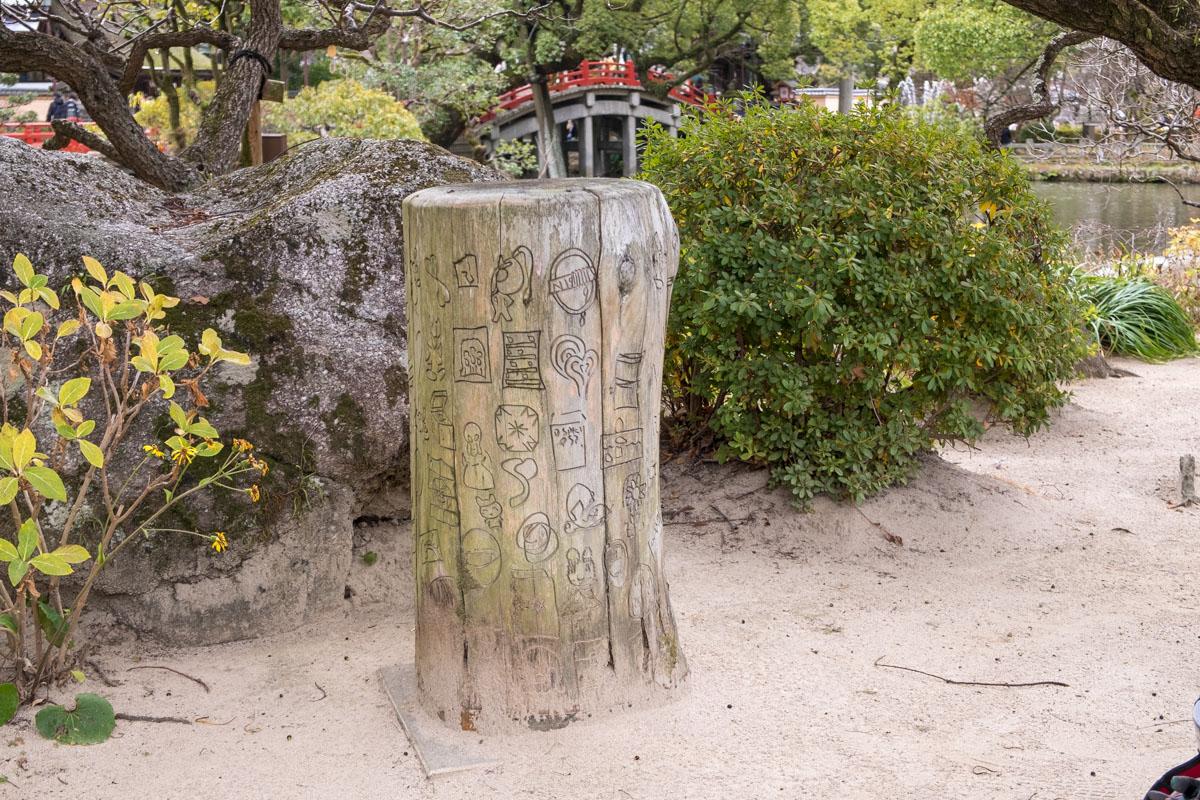
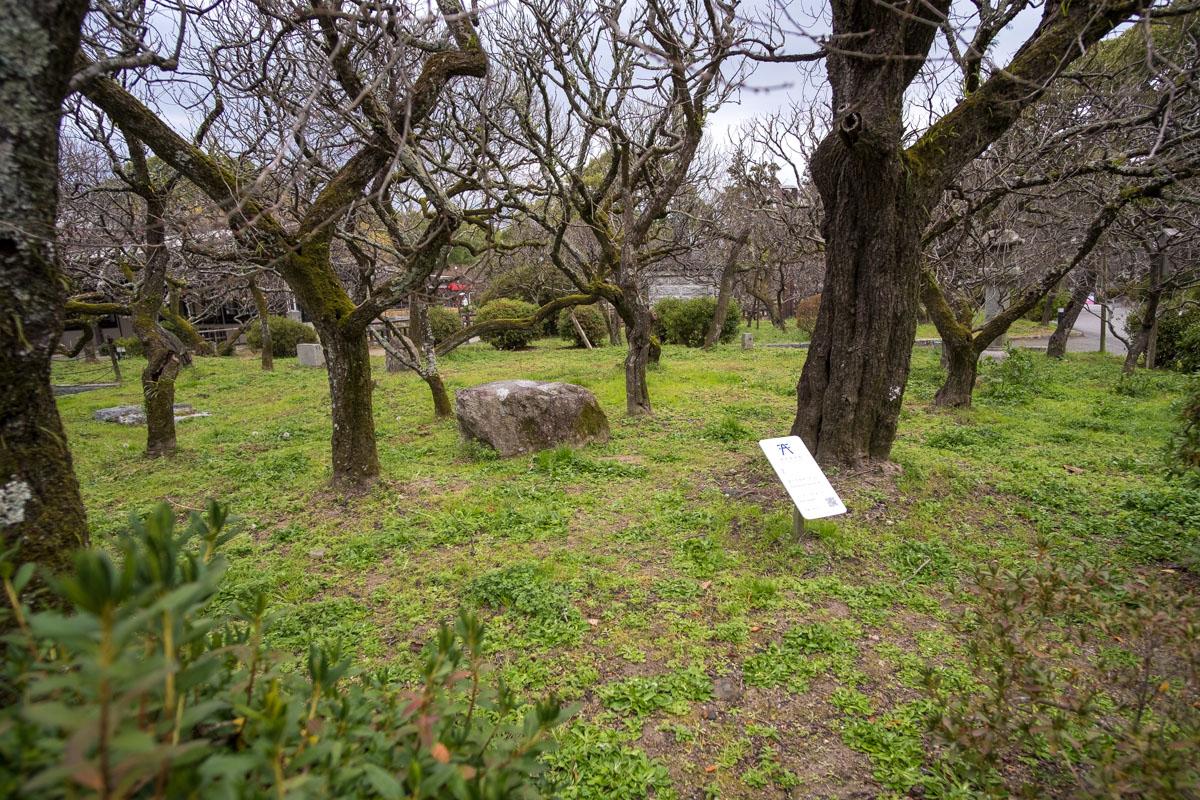
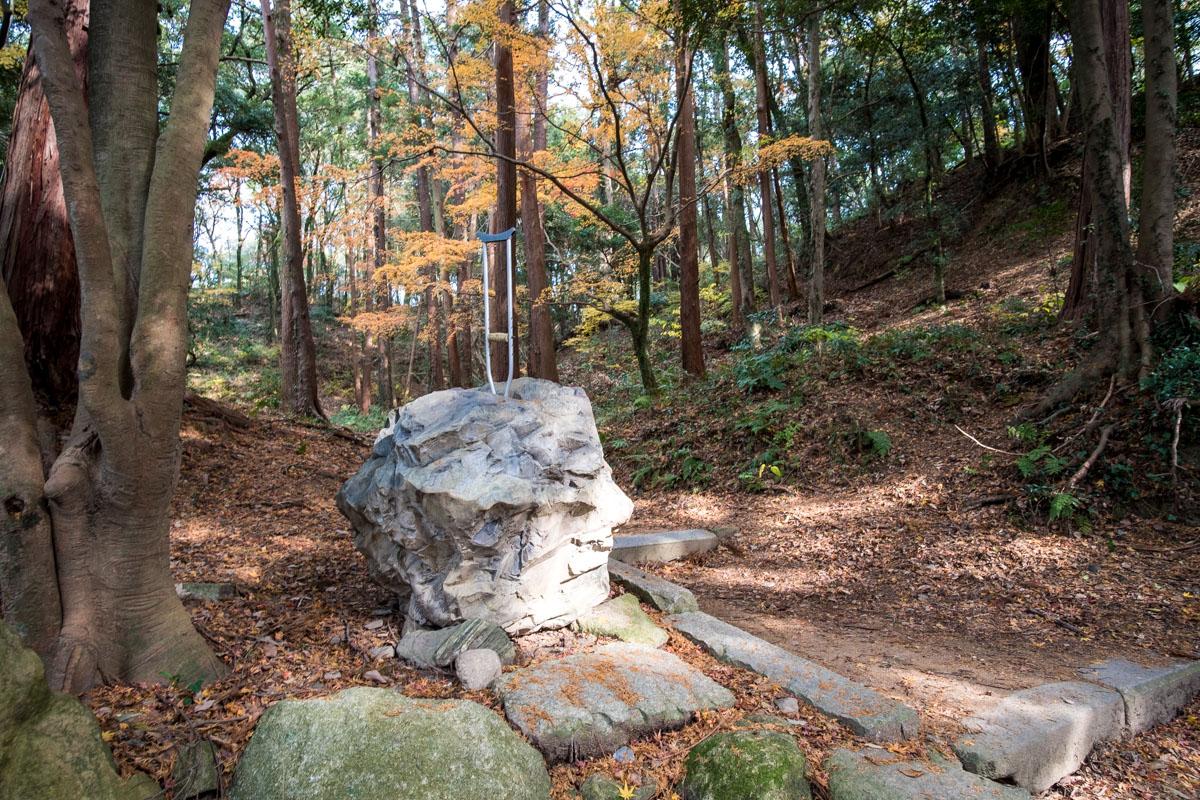
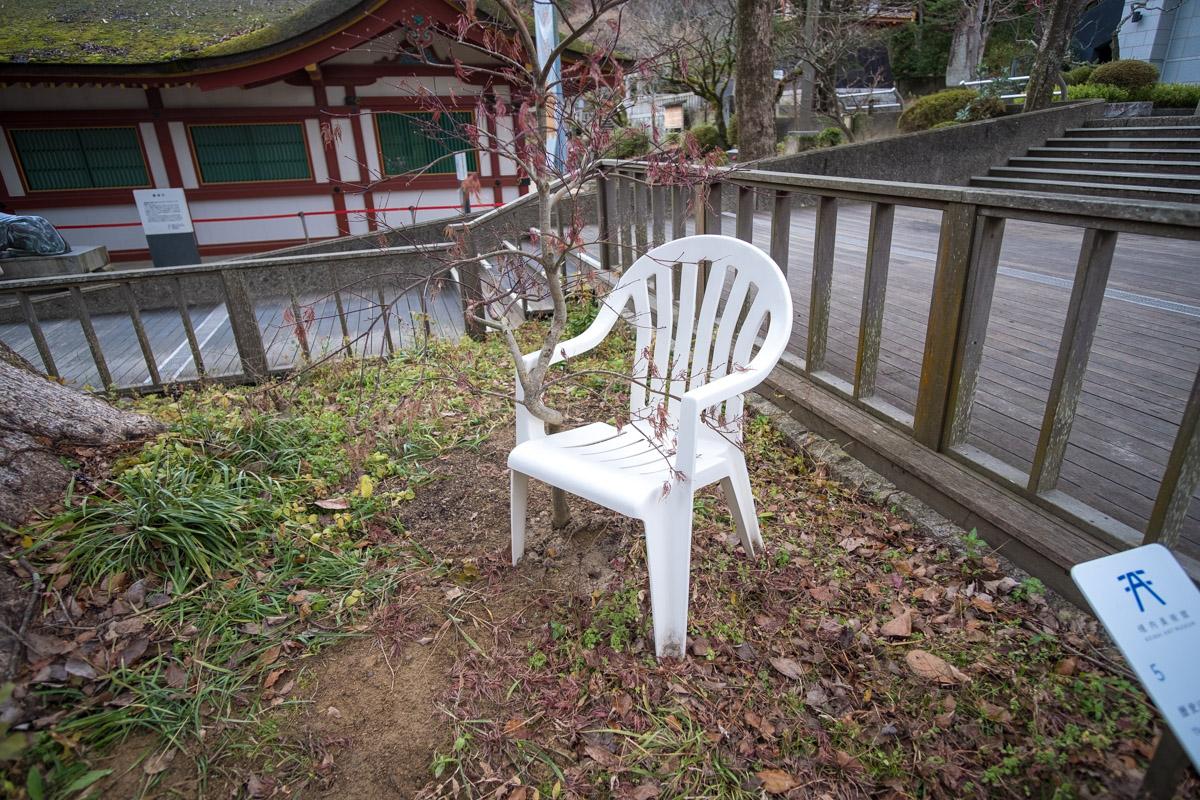
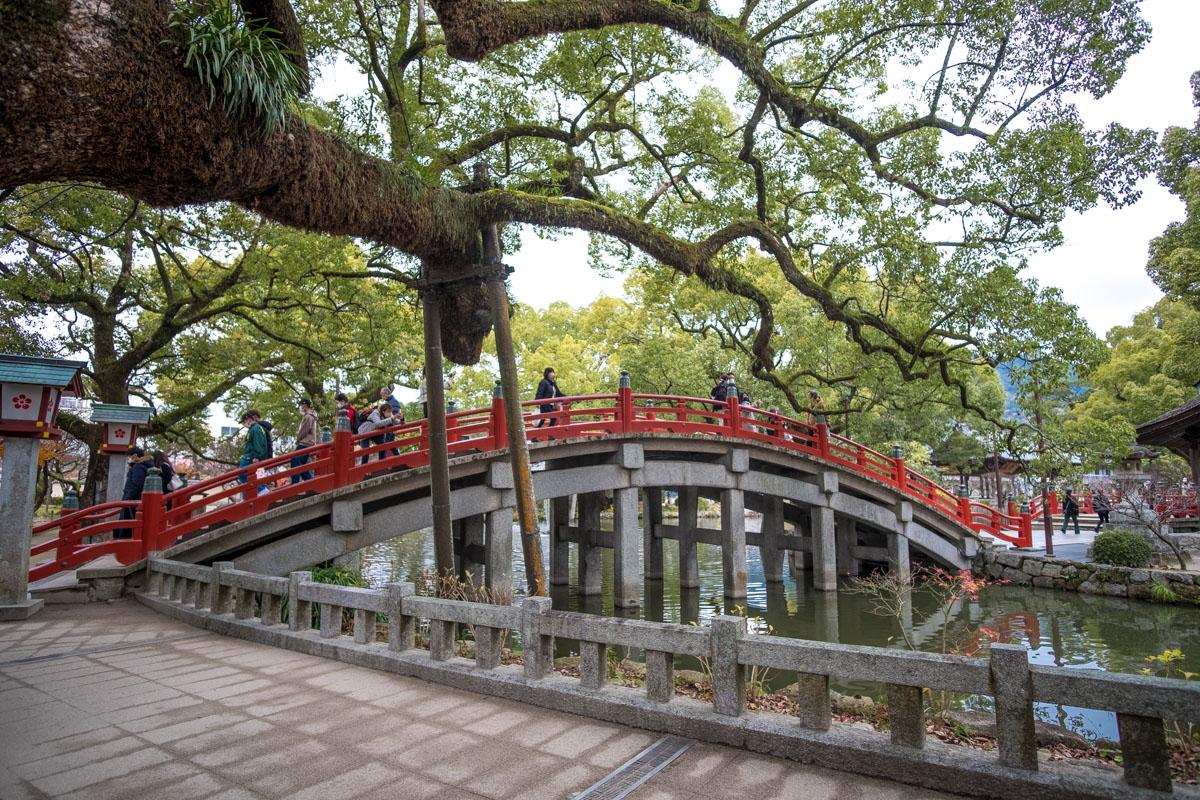
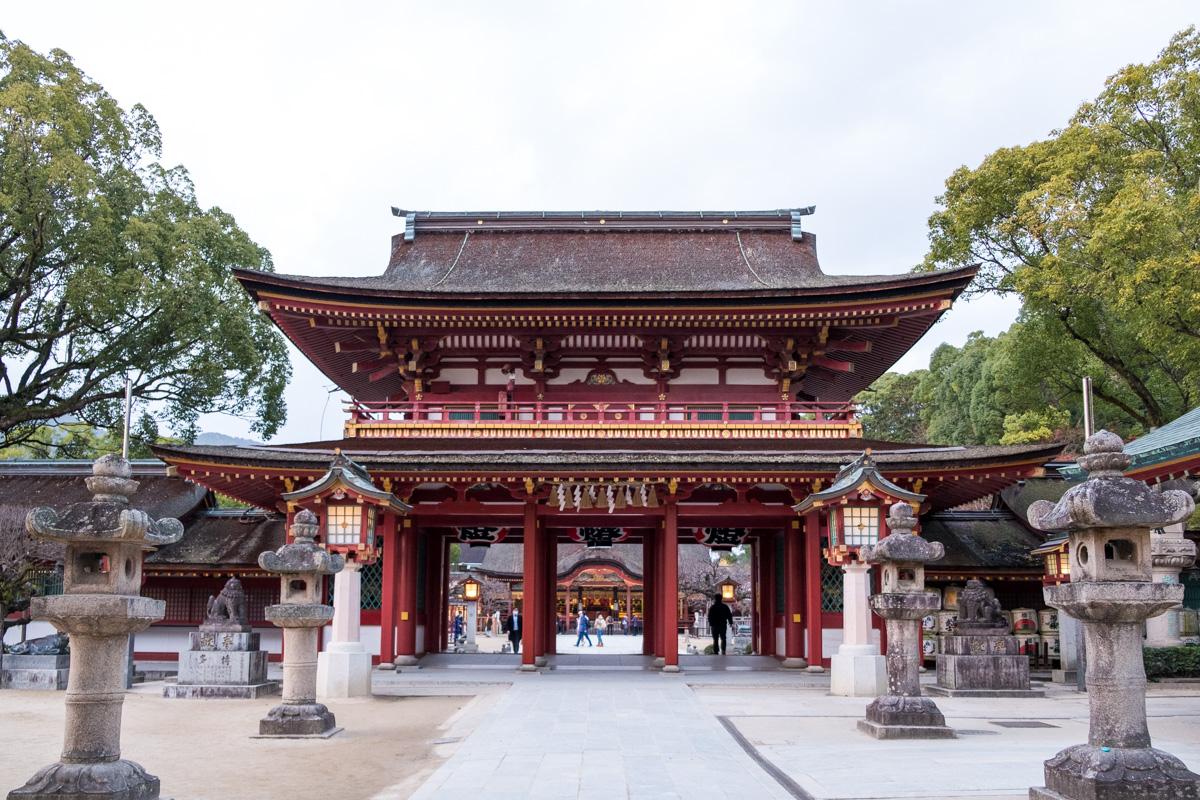
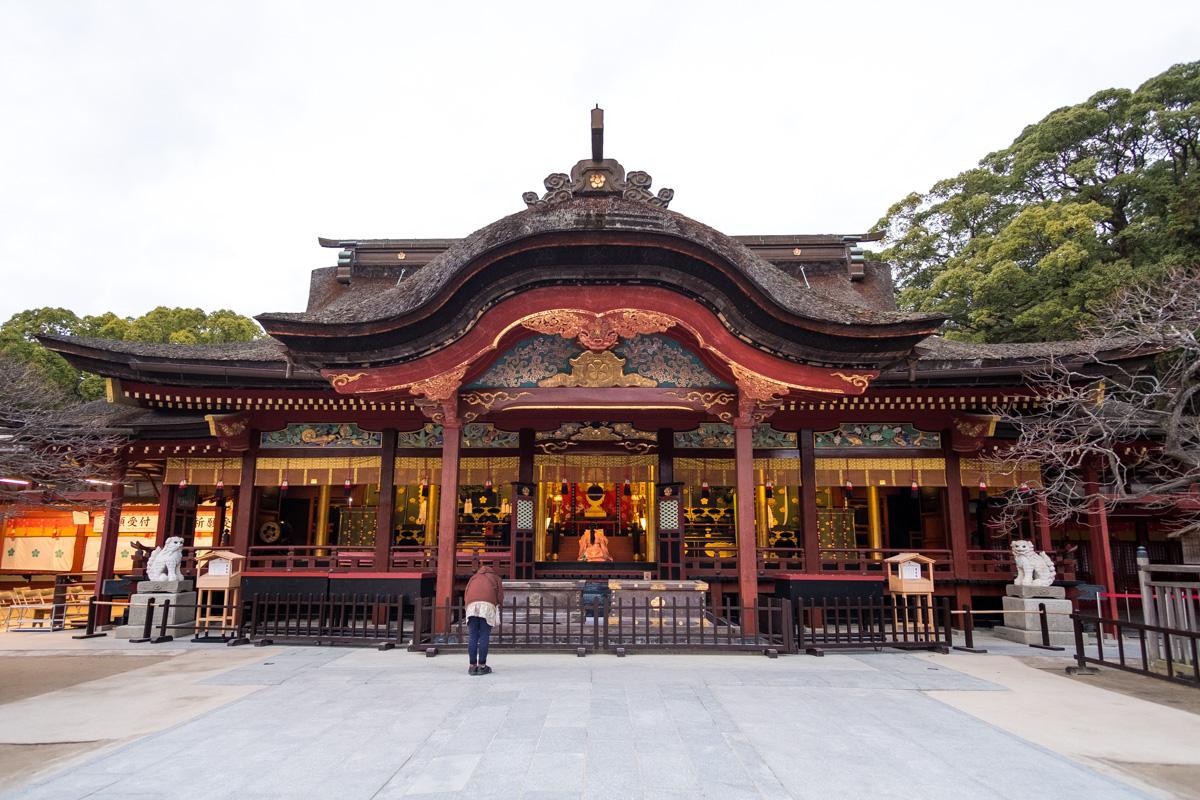
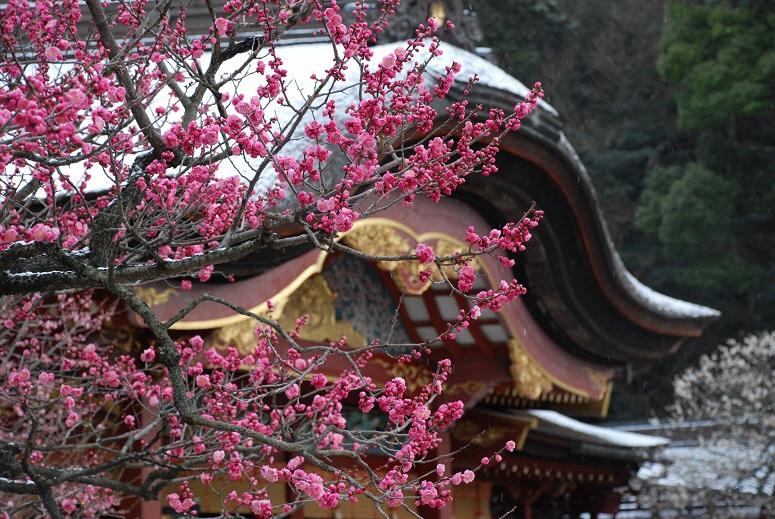
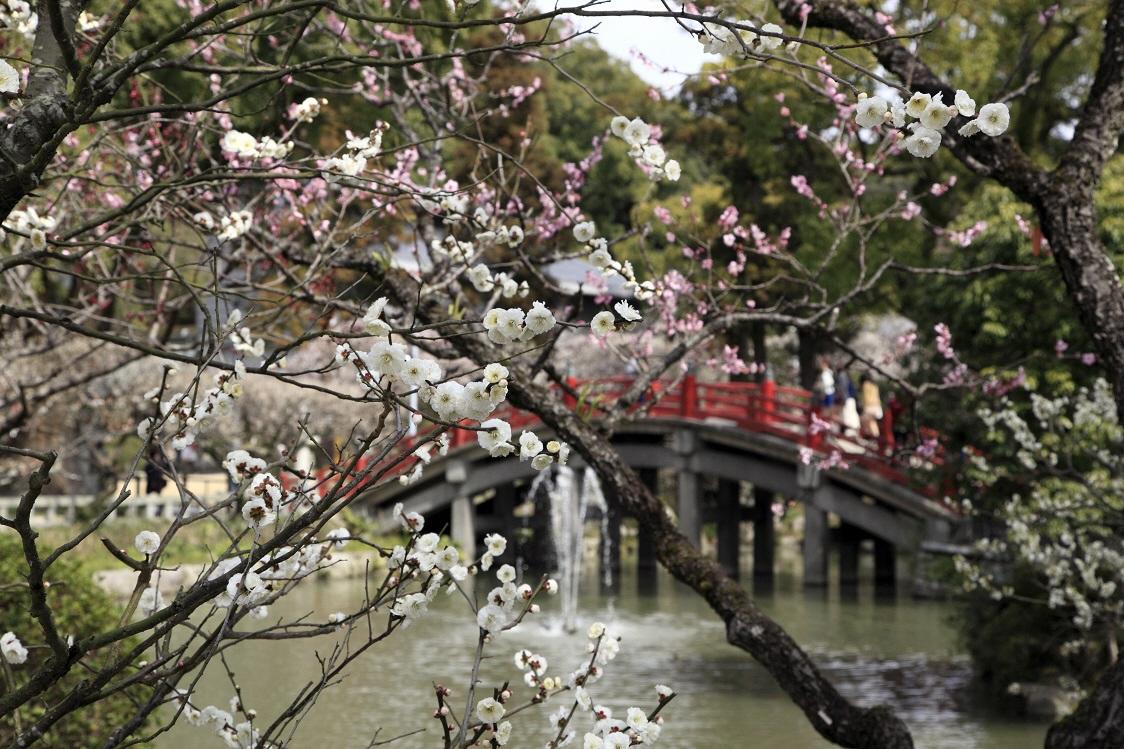
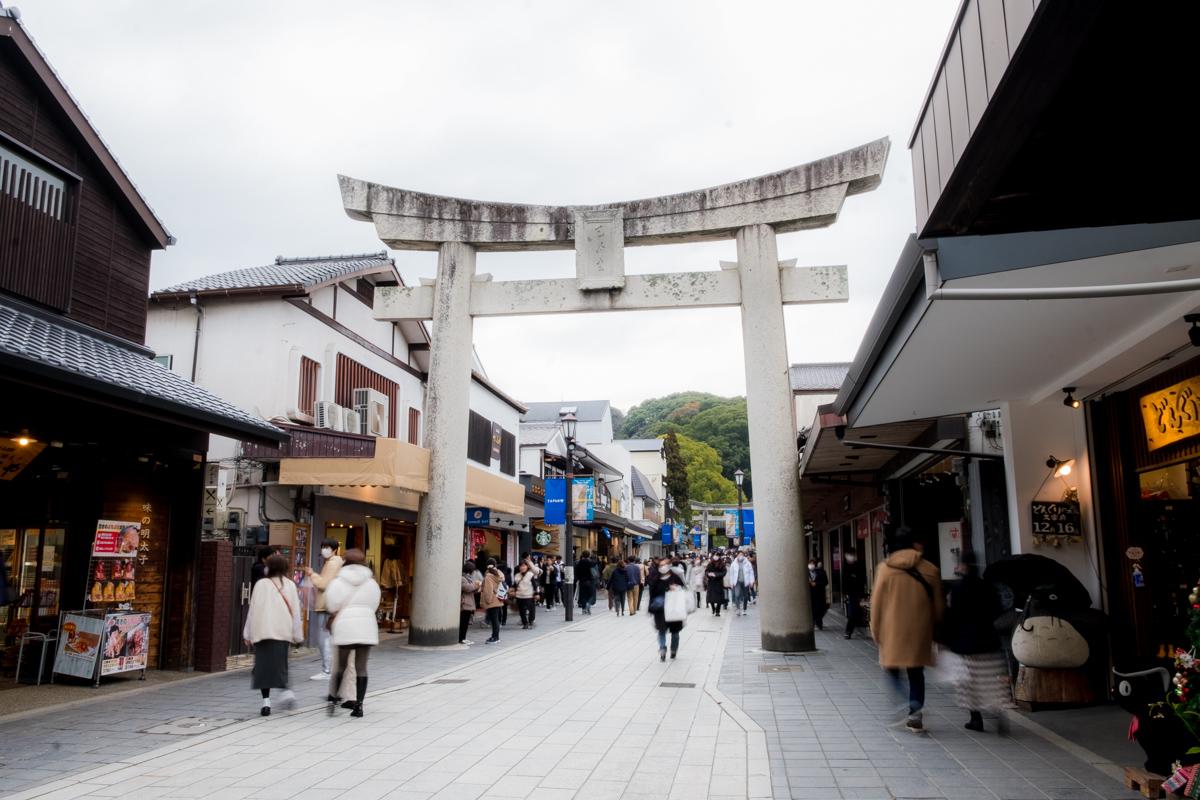
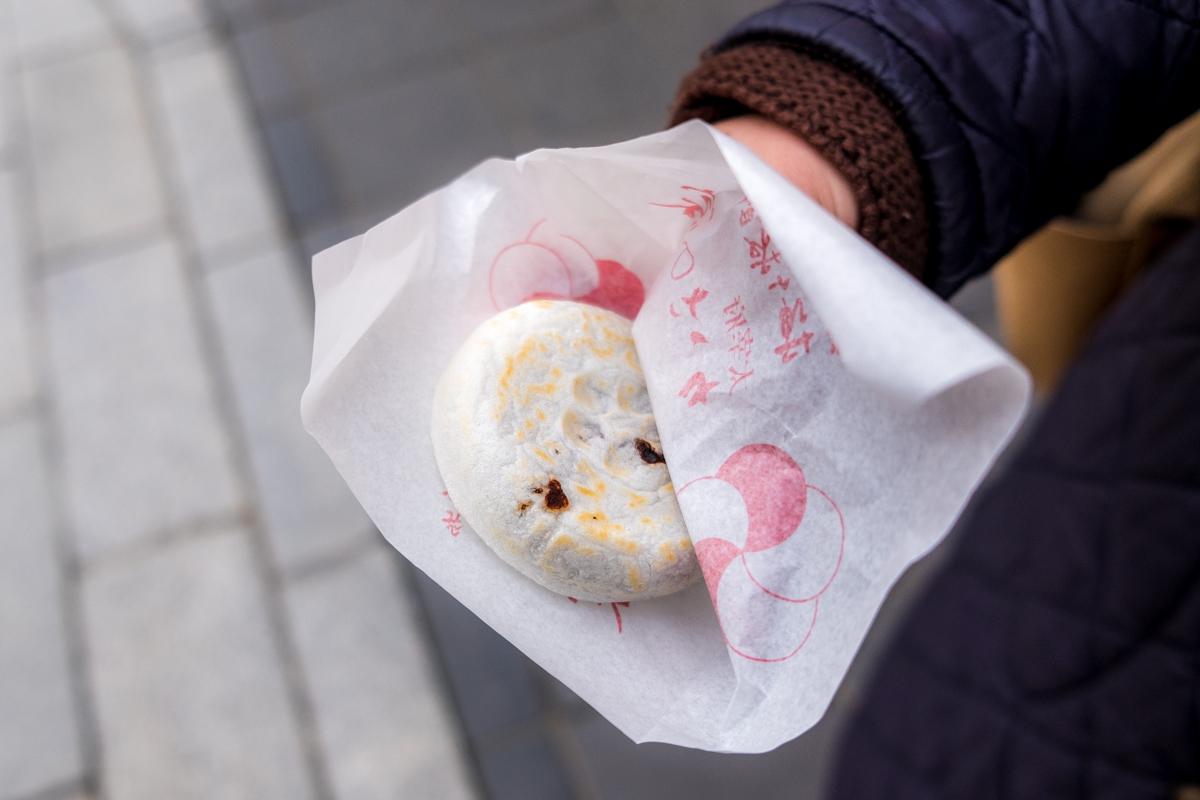
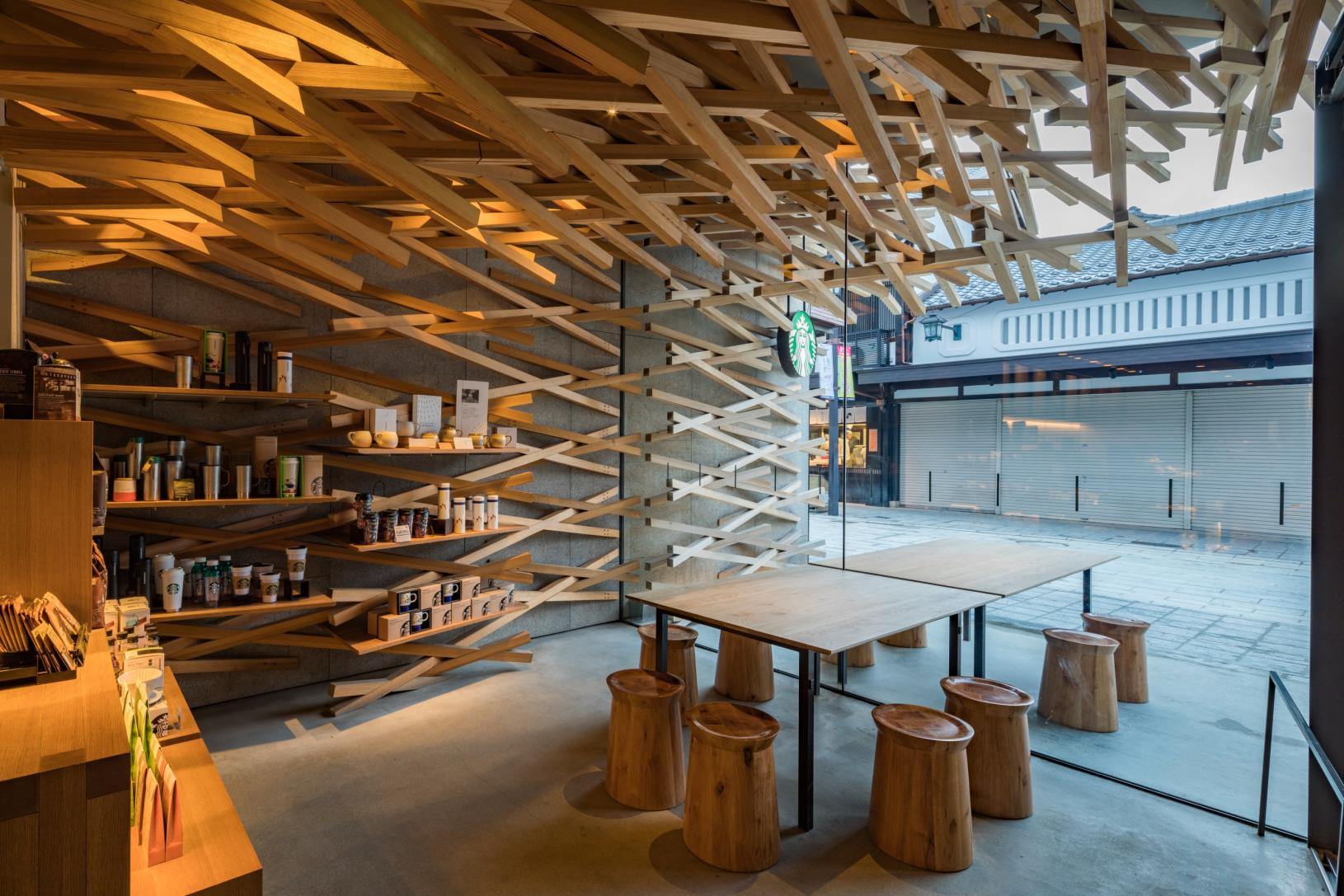
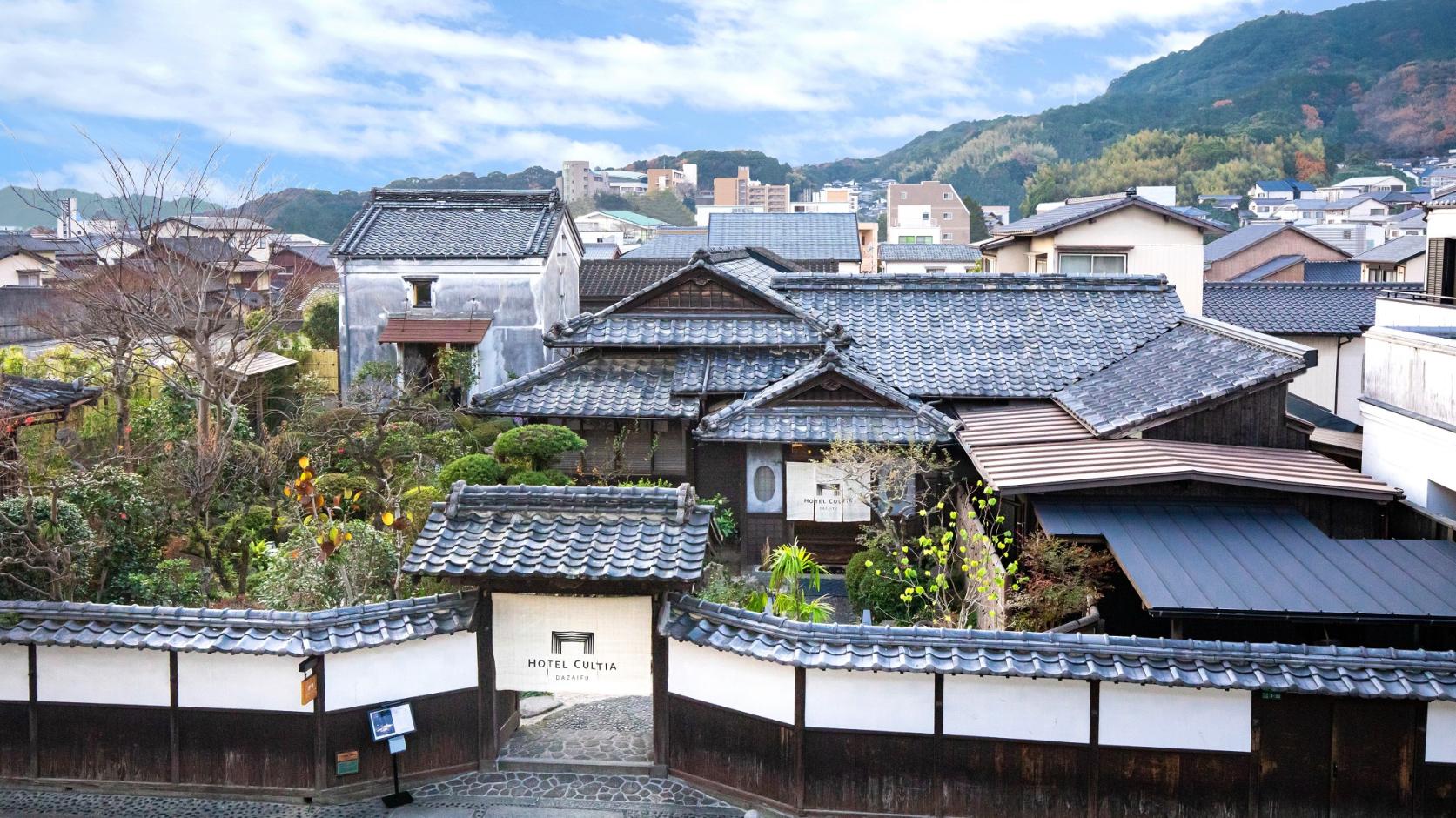
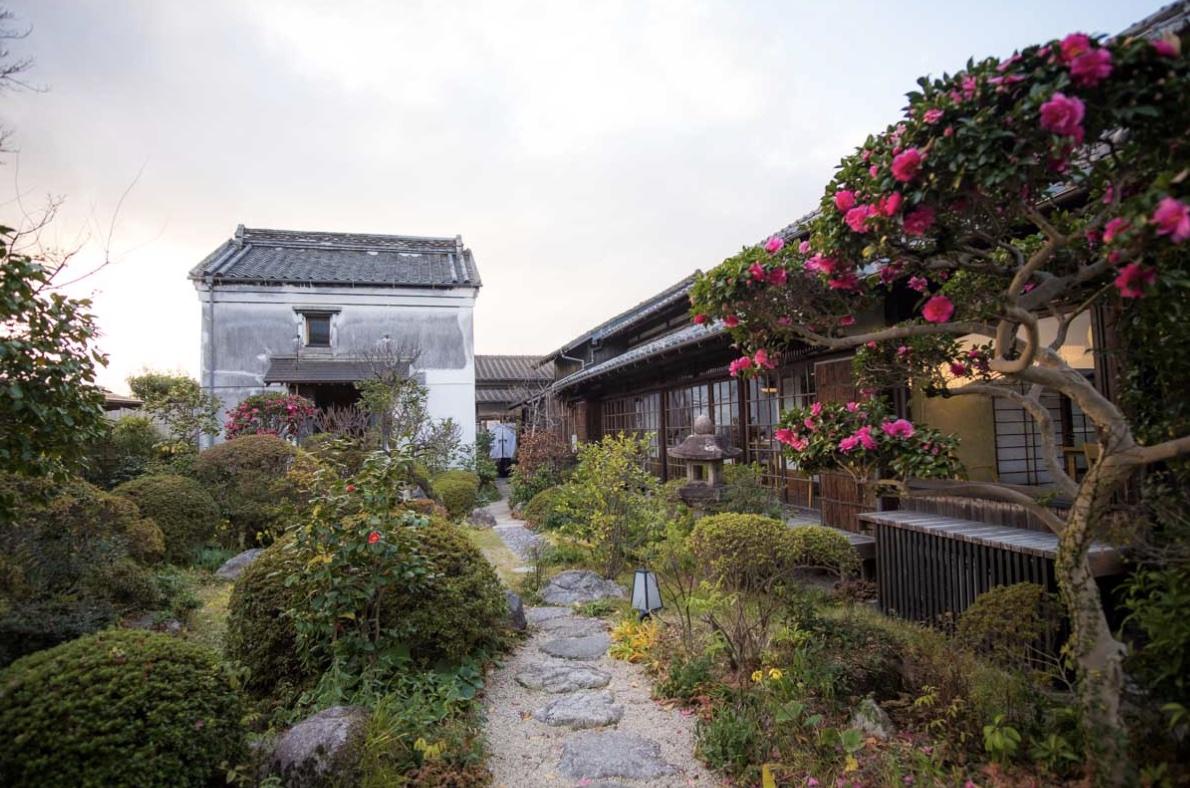
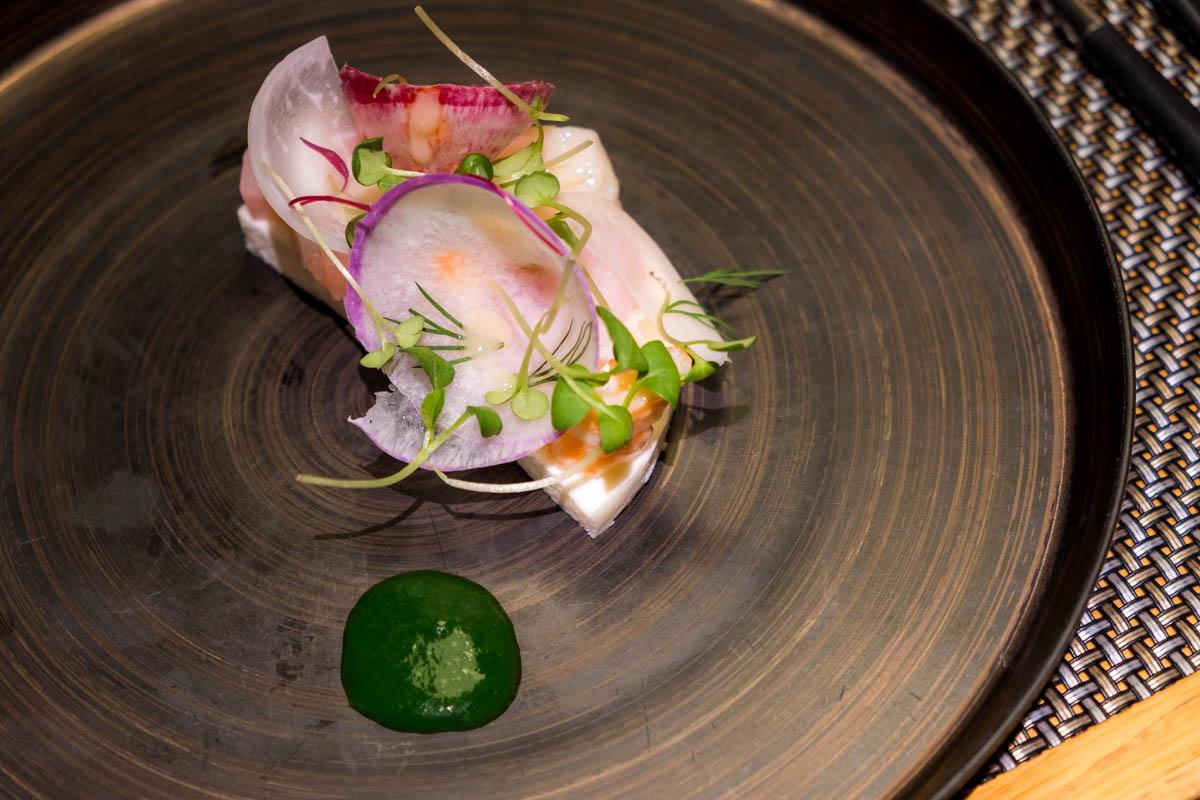
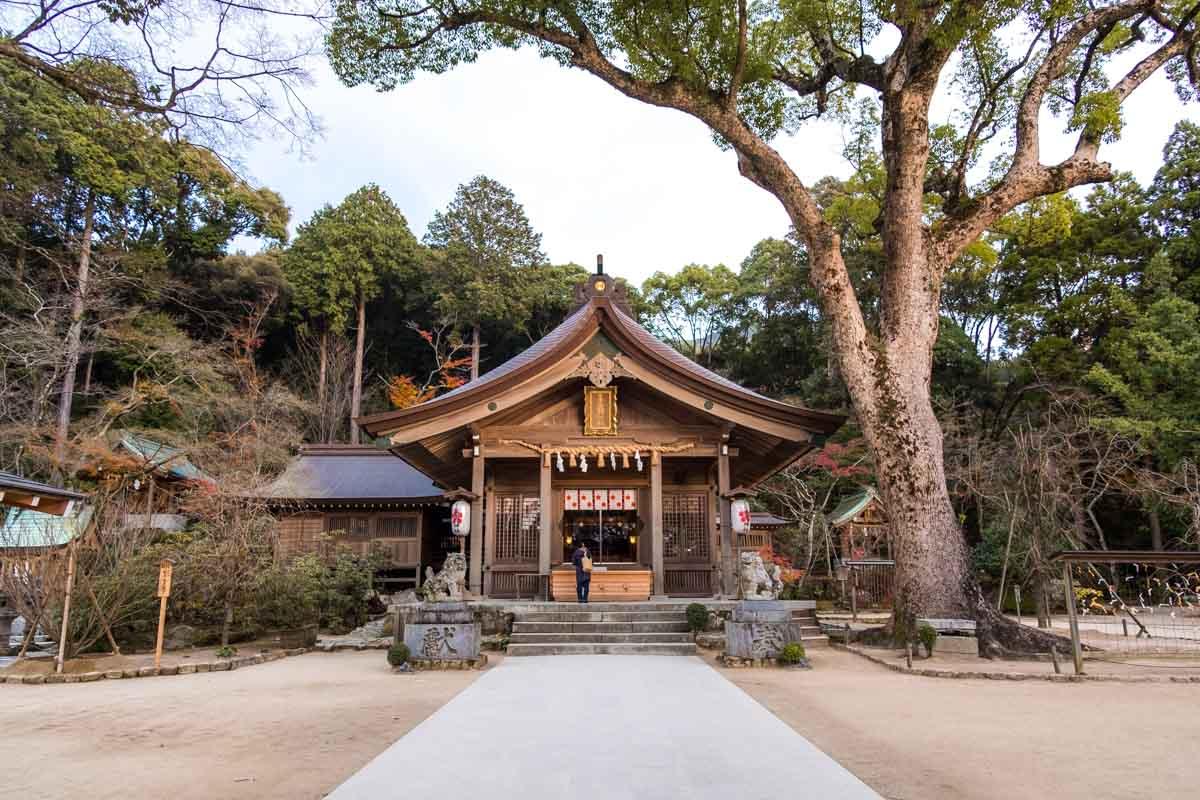
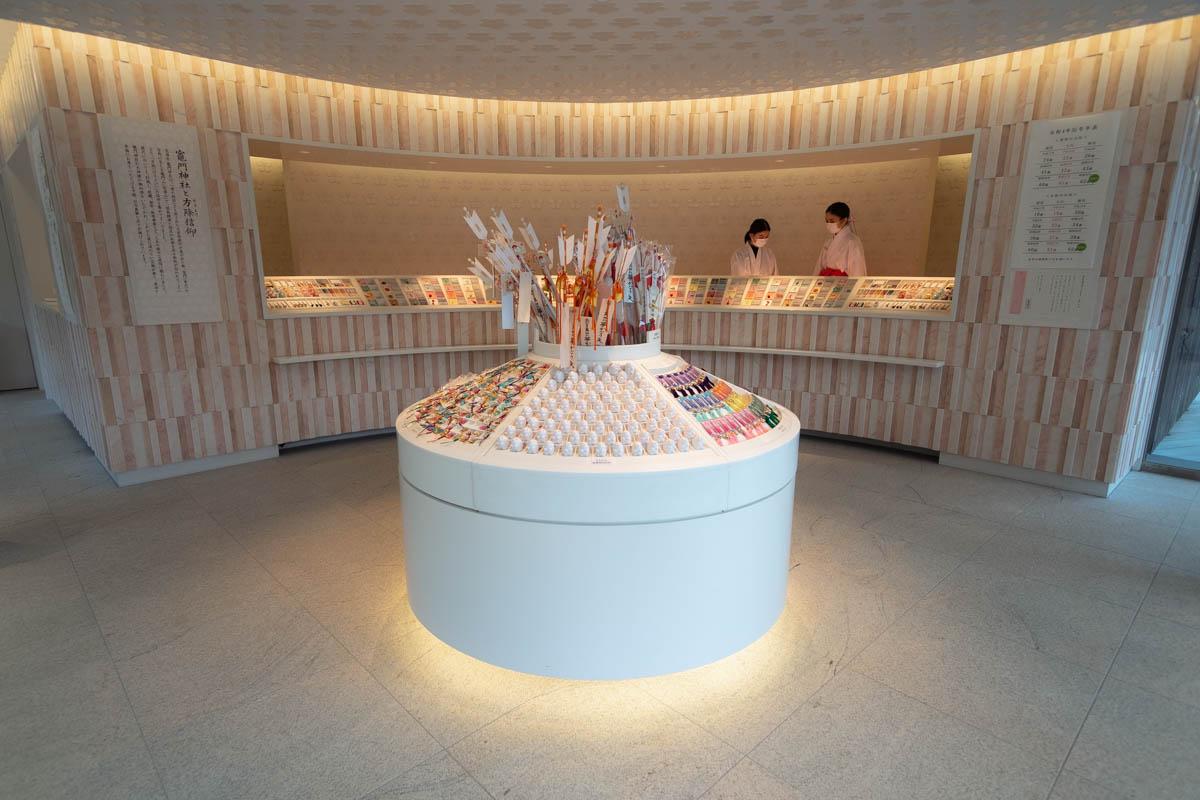
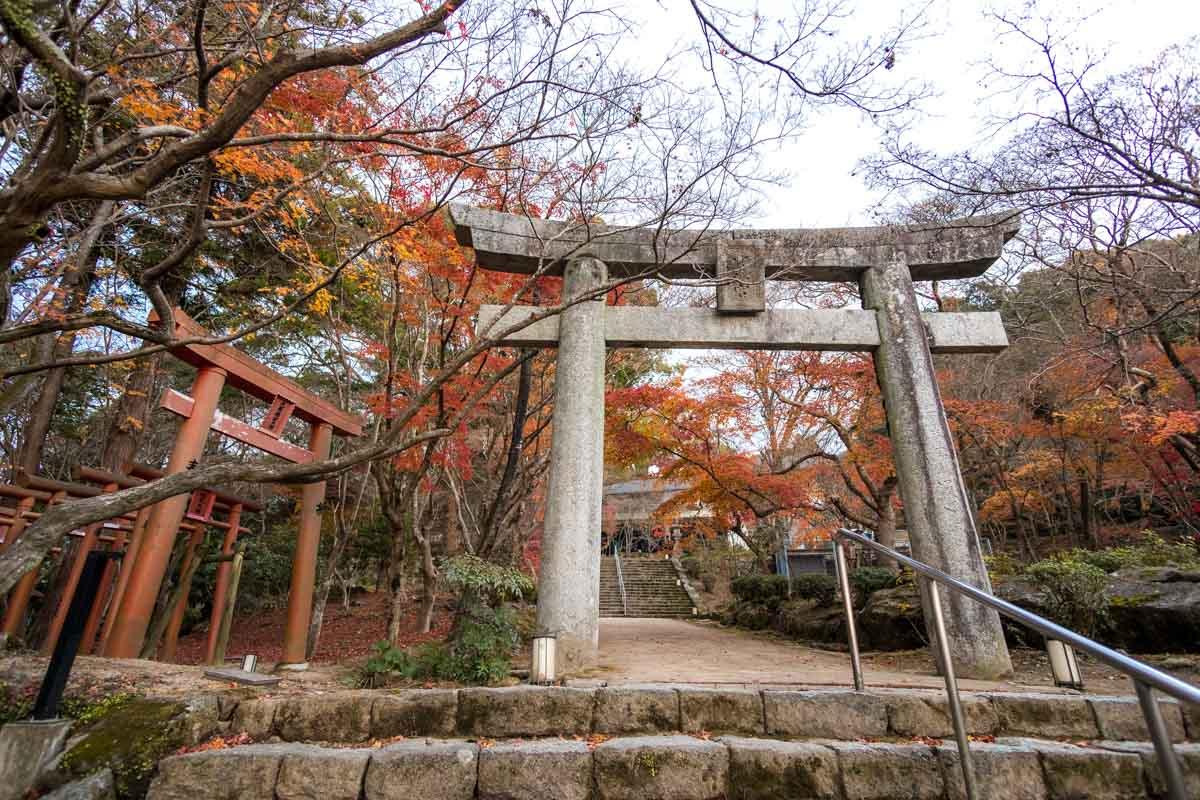
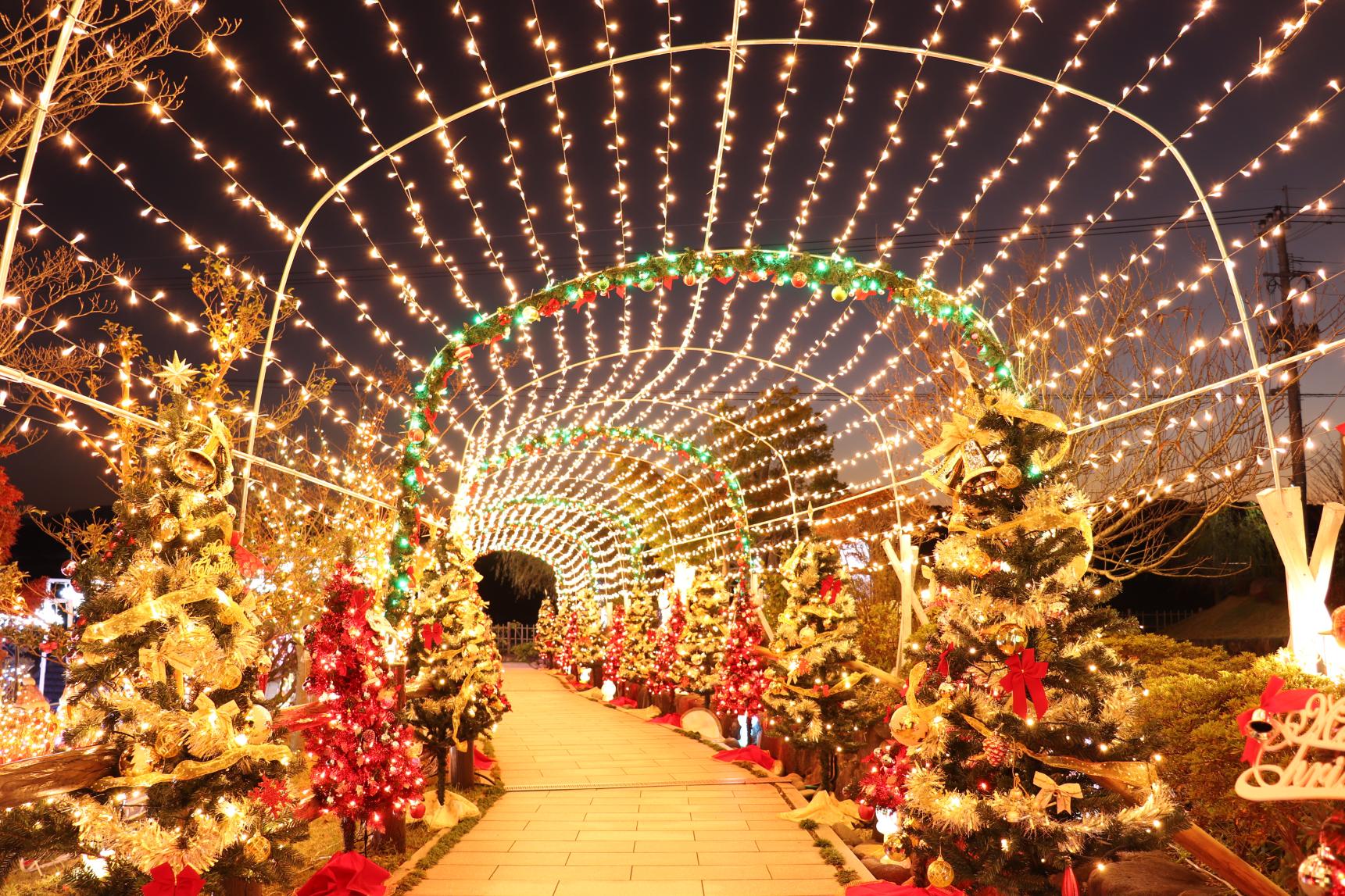
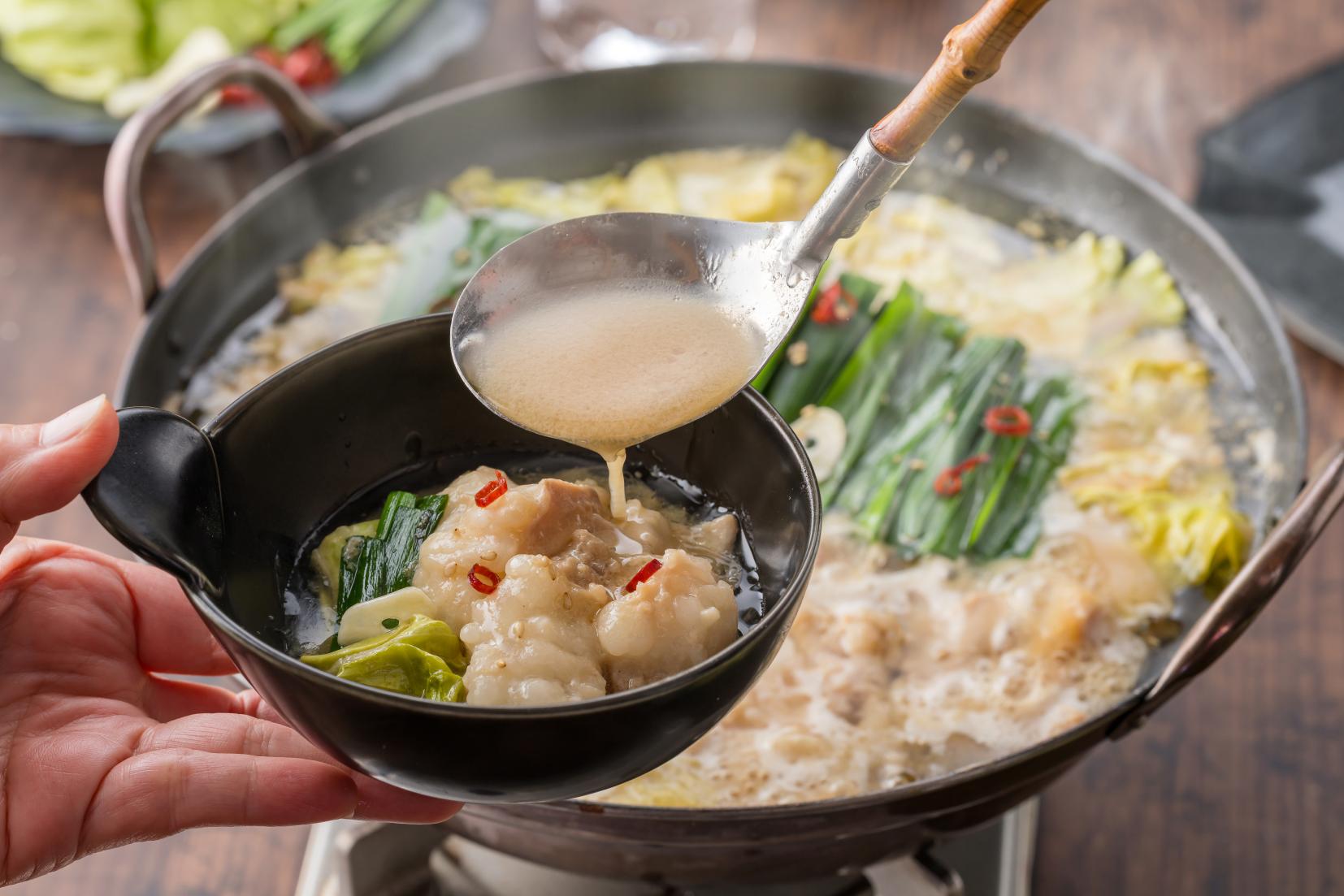
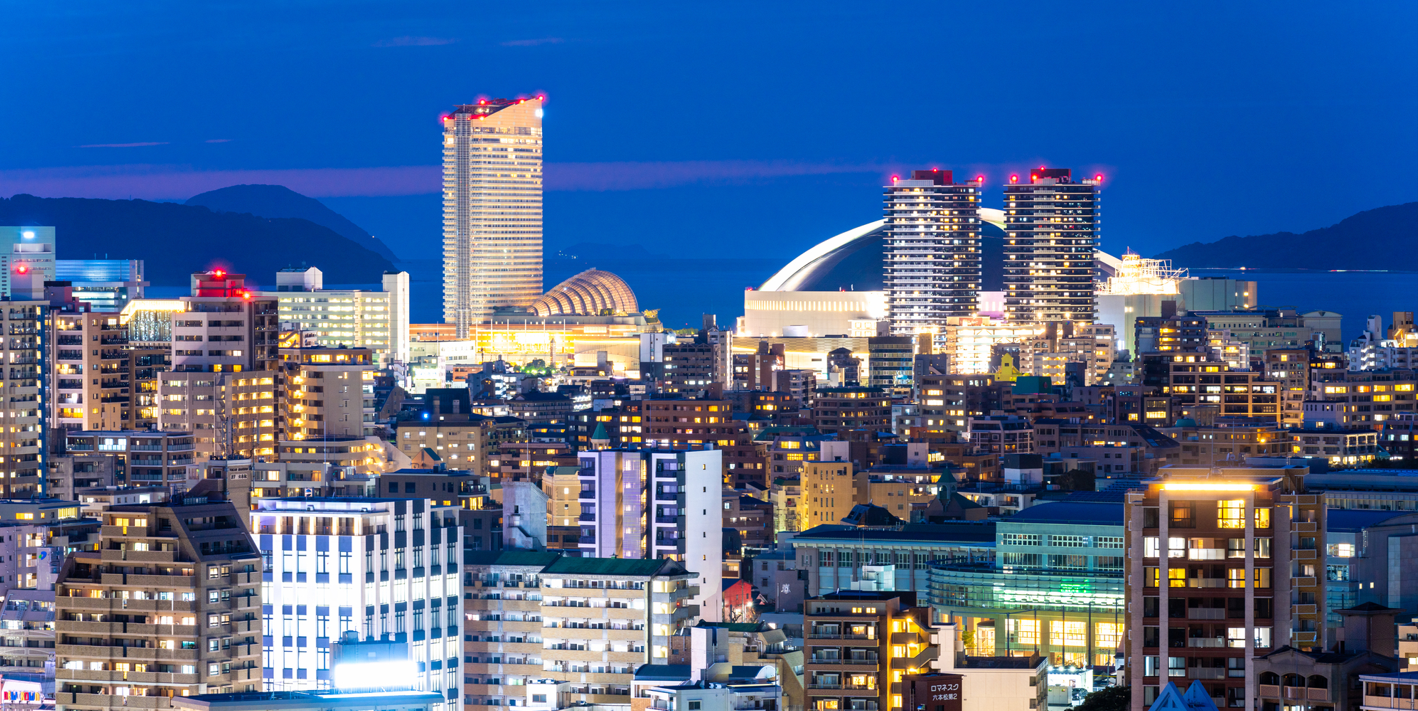
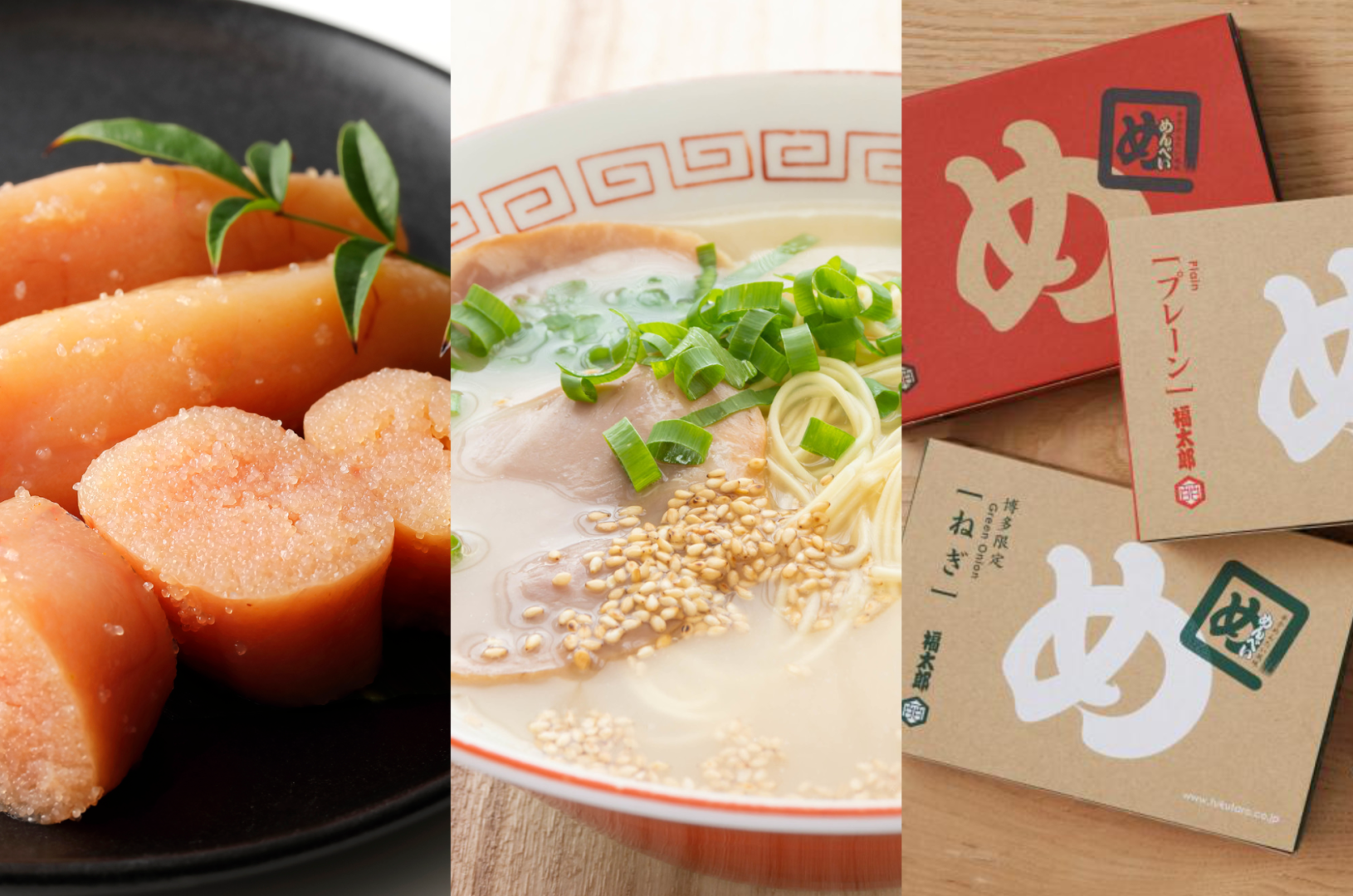
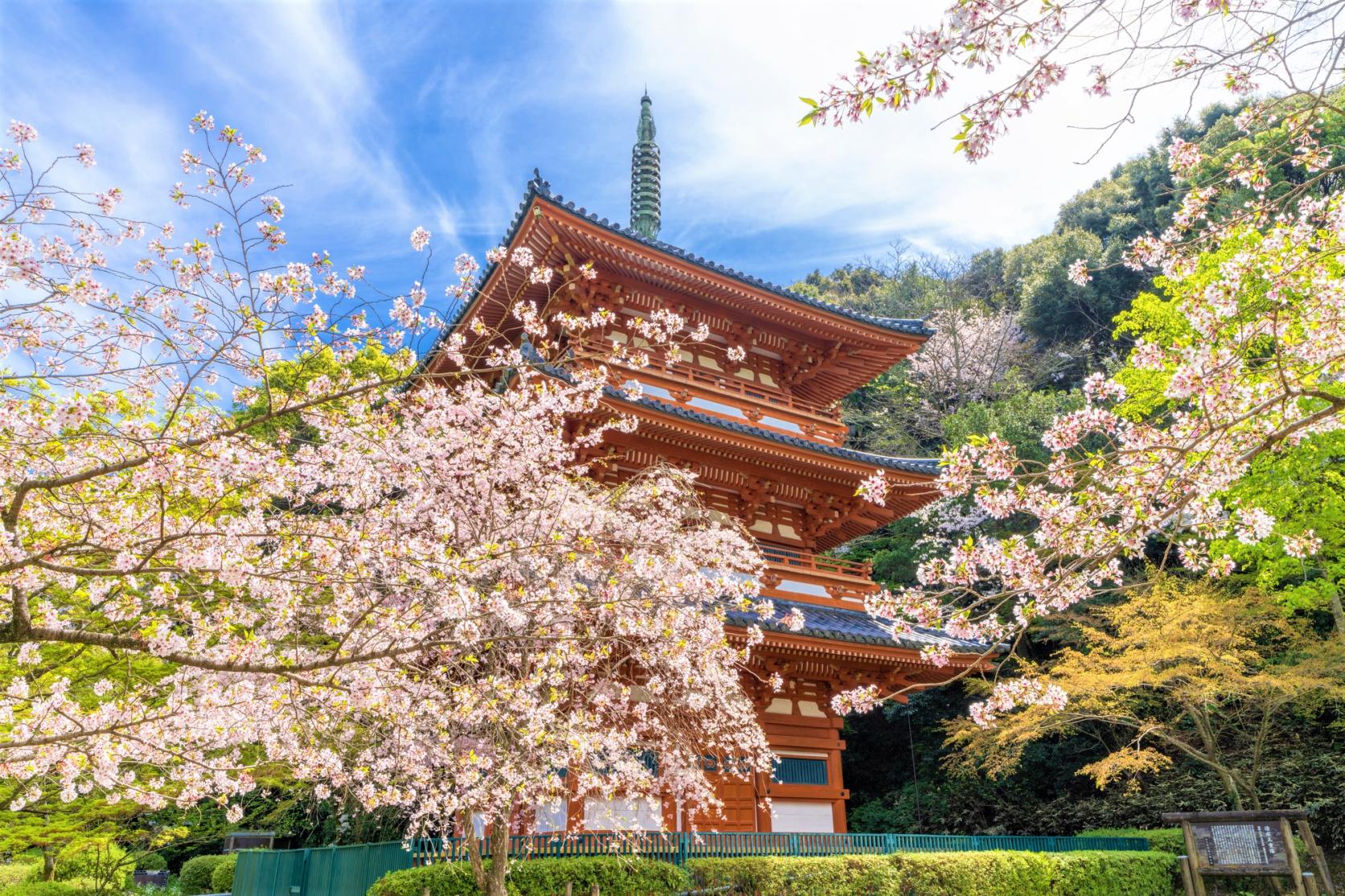
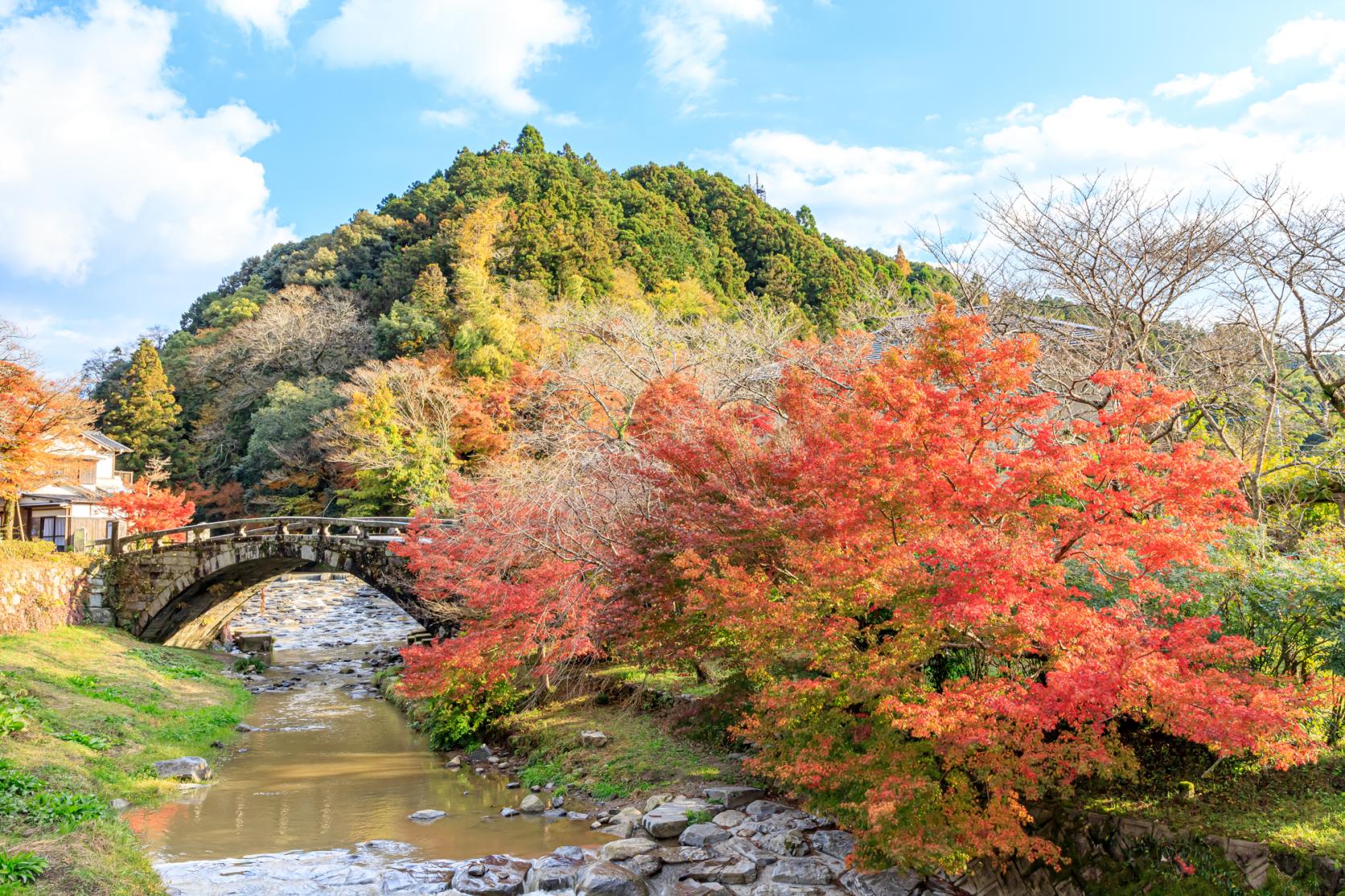
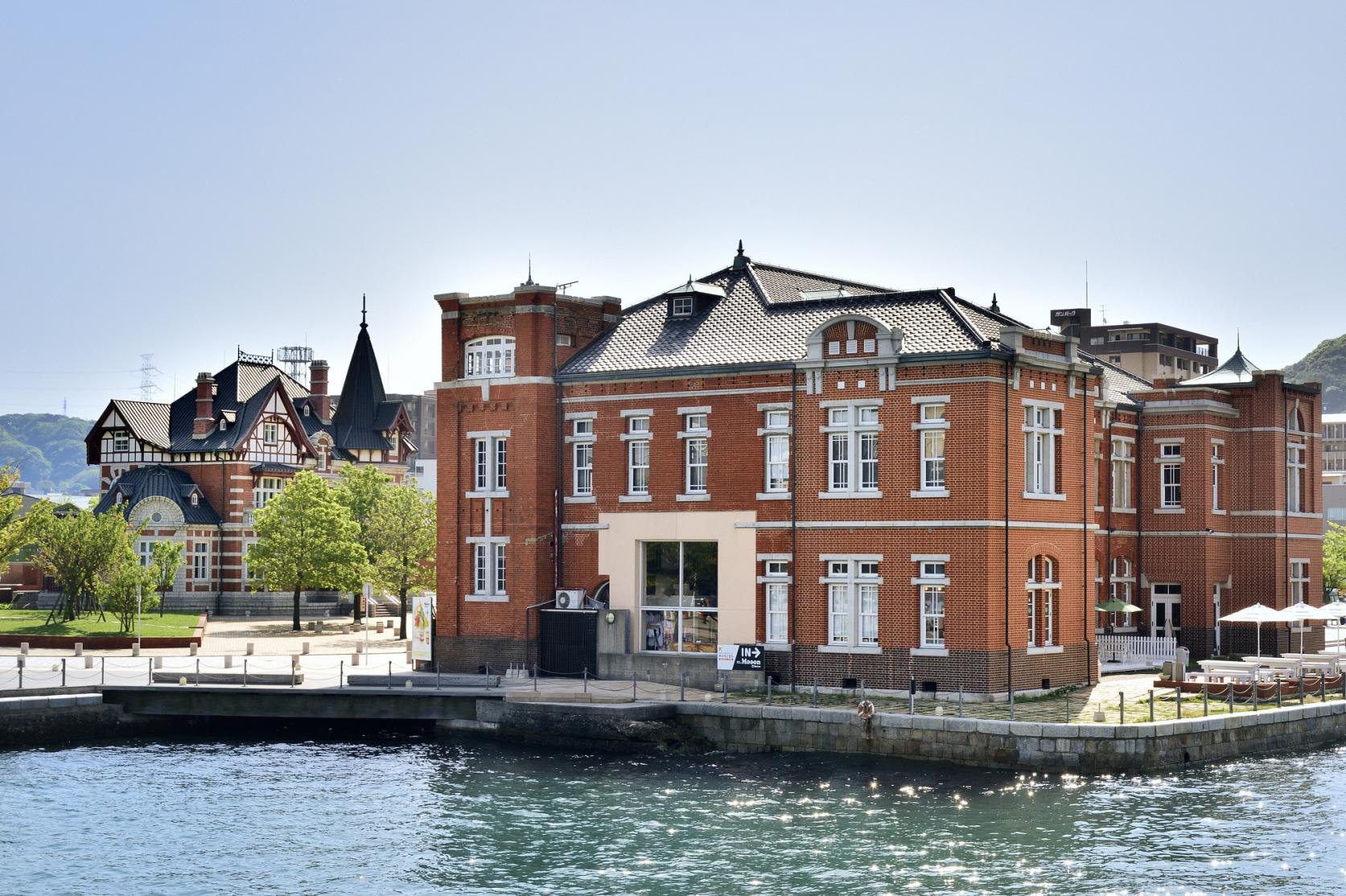

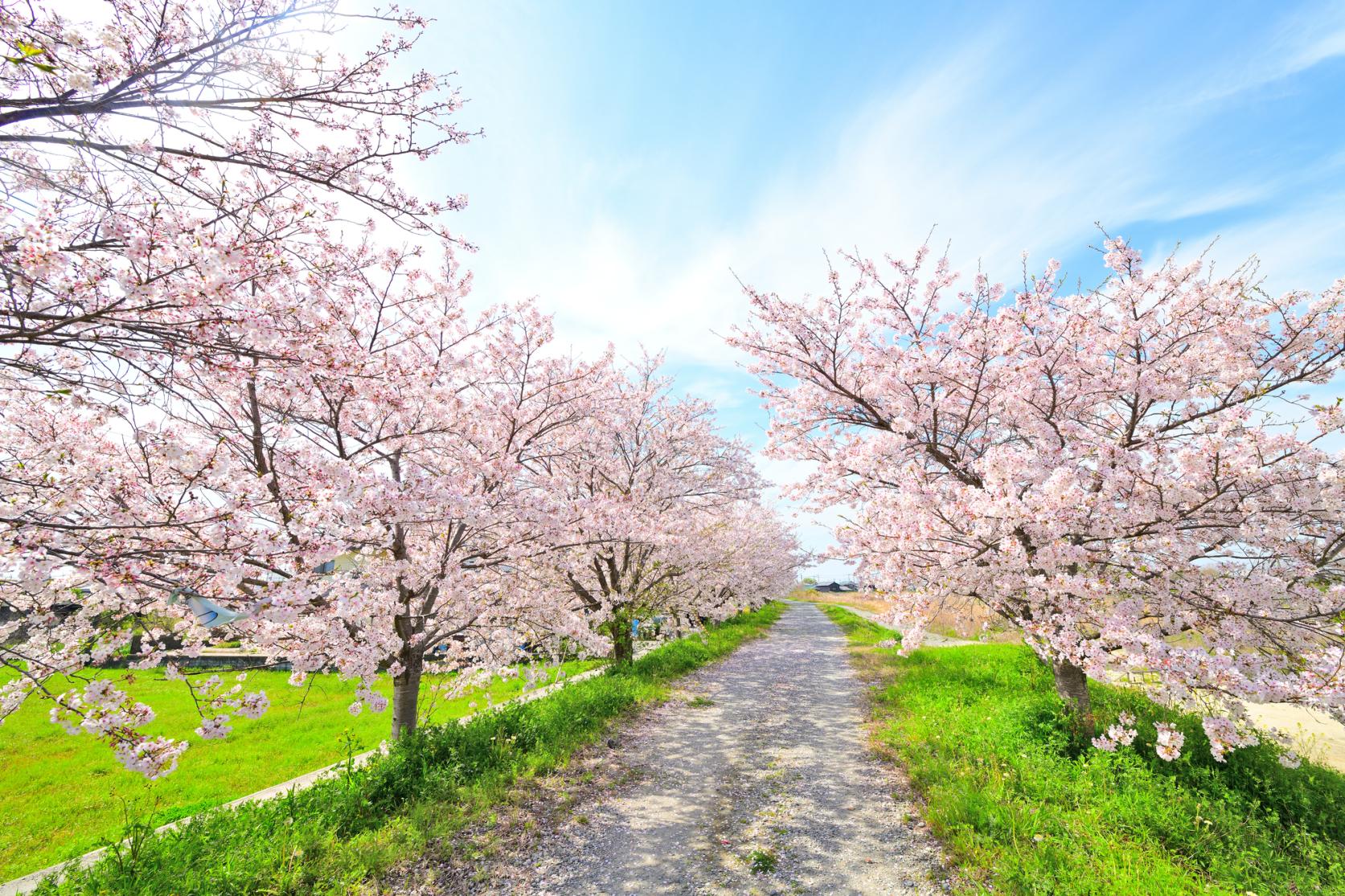
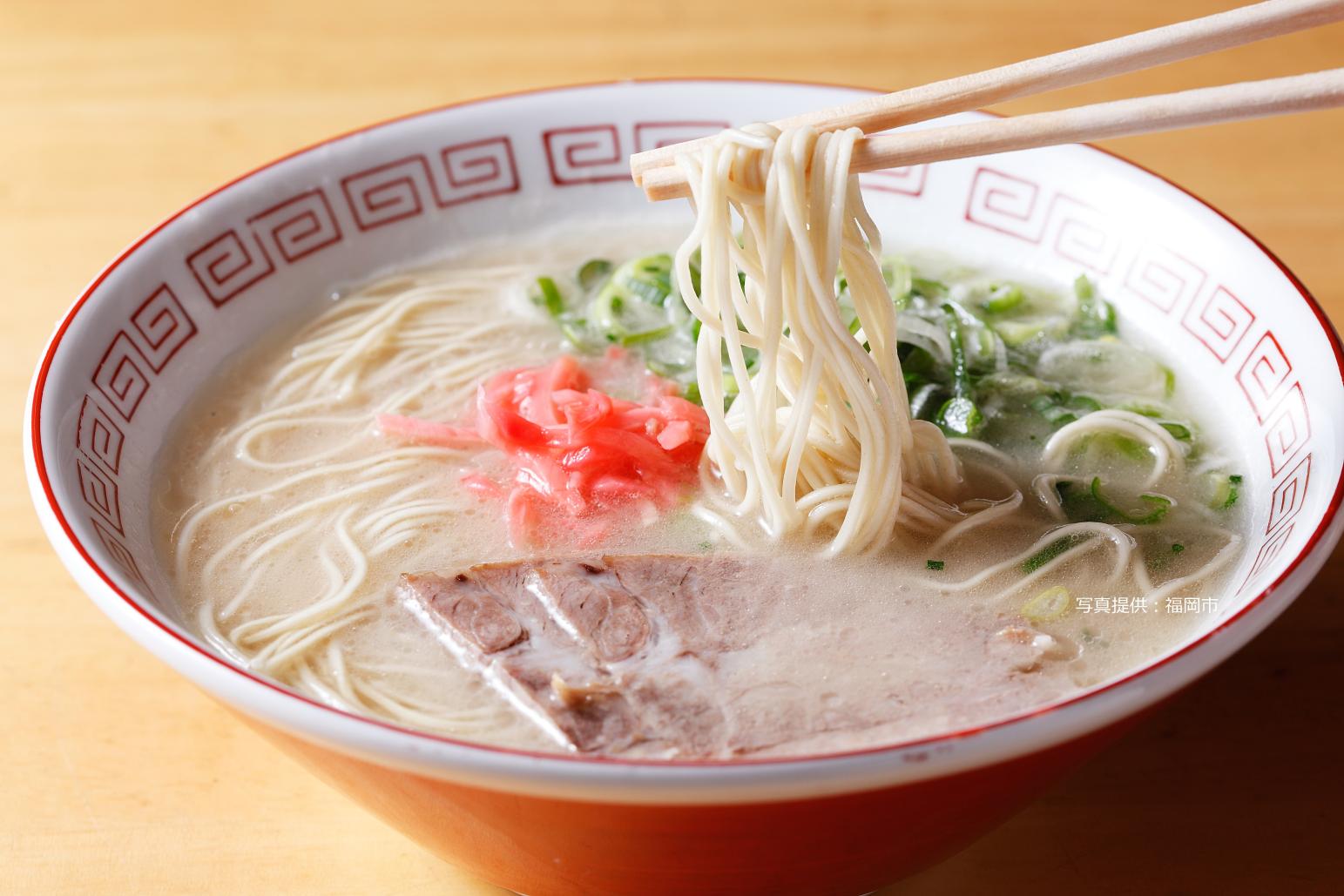
![[2025] Strawberry Picking Spots in Fukuoka-1](https://www.crossroadfukuoka.jp/storage/special_features/49/responsive_images/9ZHgrqvQdpH8tM4IRF54DXu0aPBF3YGGkj5WOTGc__1673_1115.jpg)
